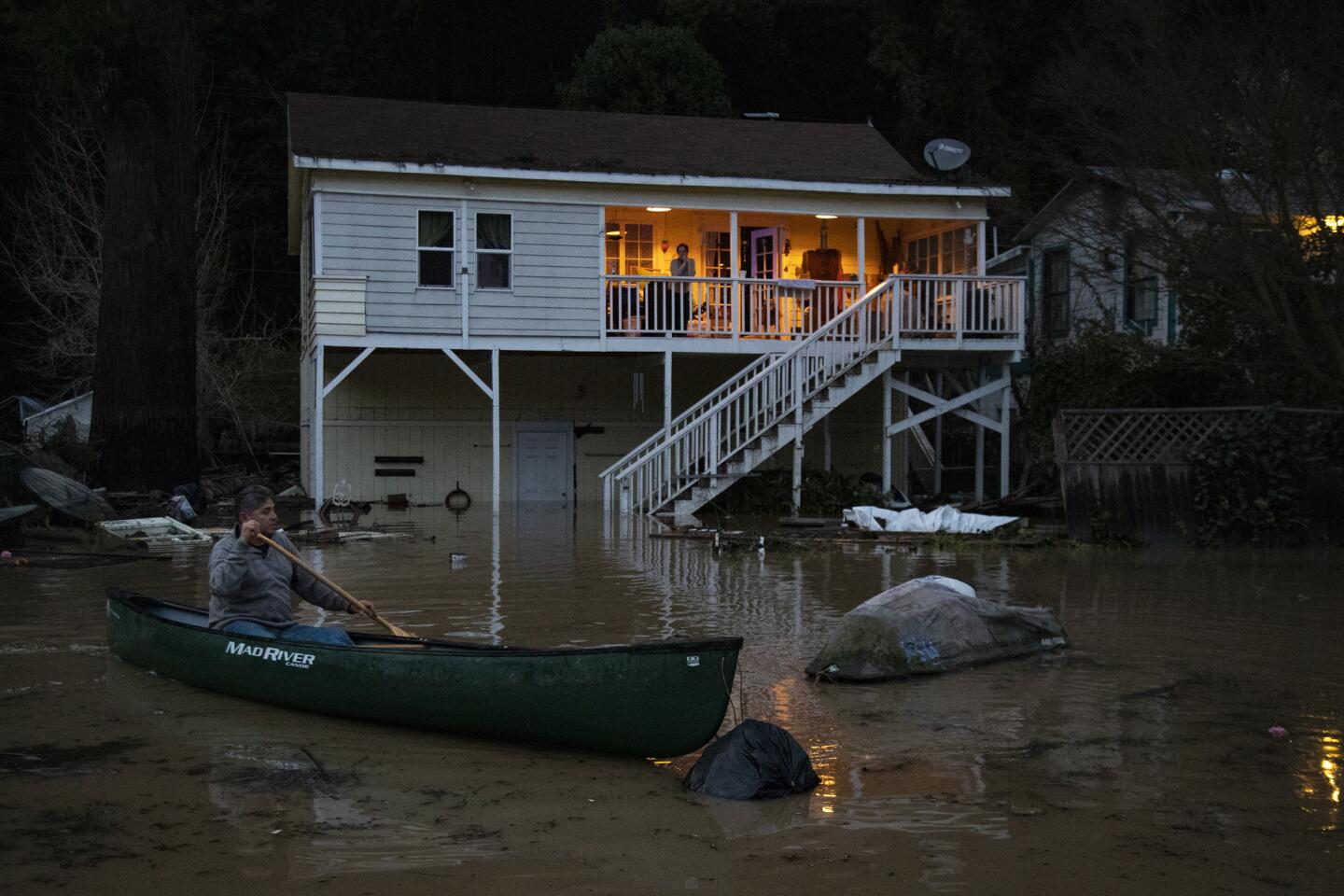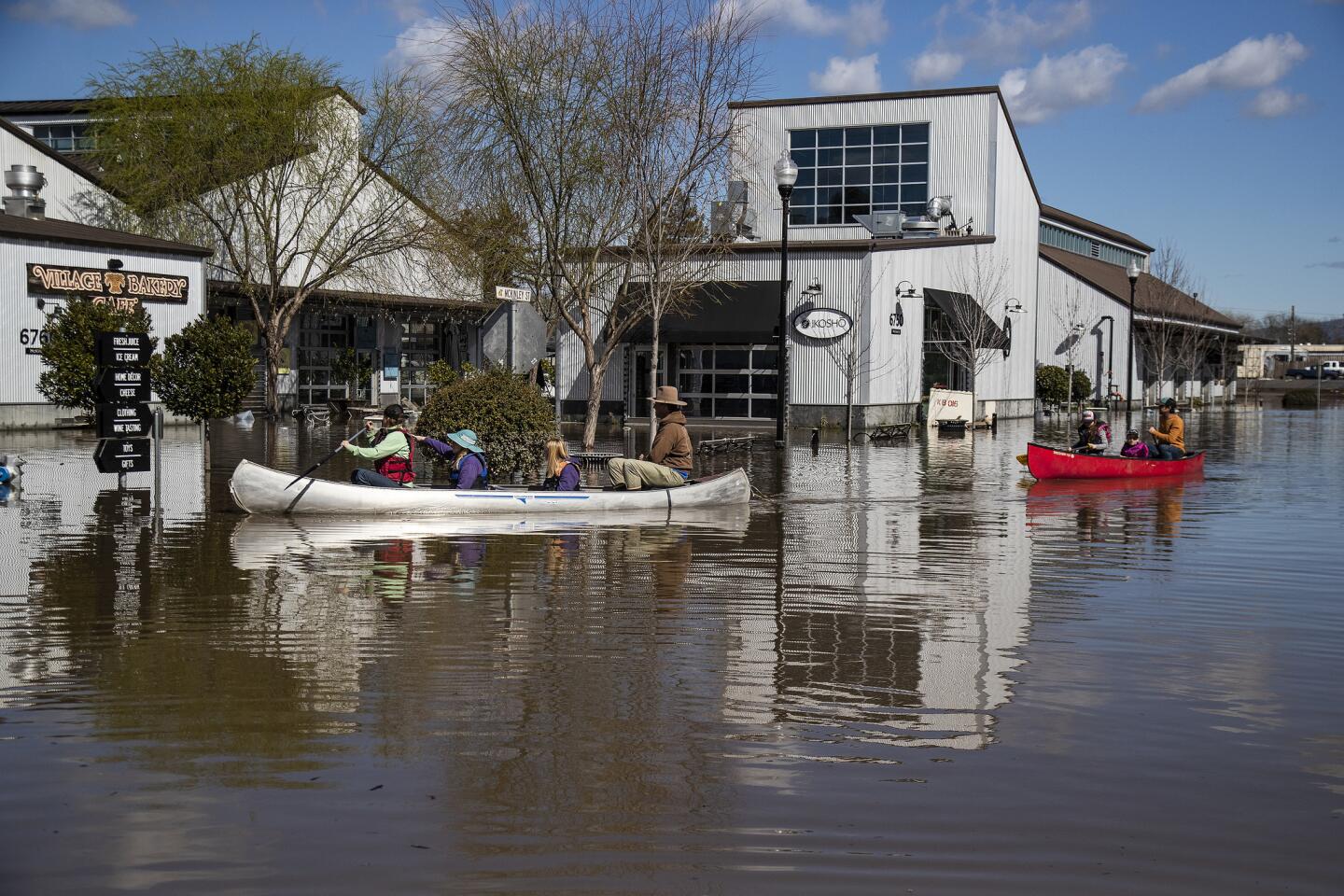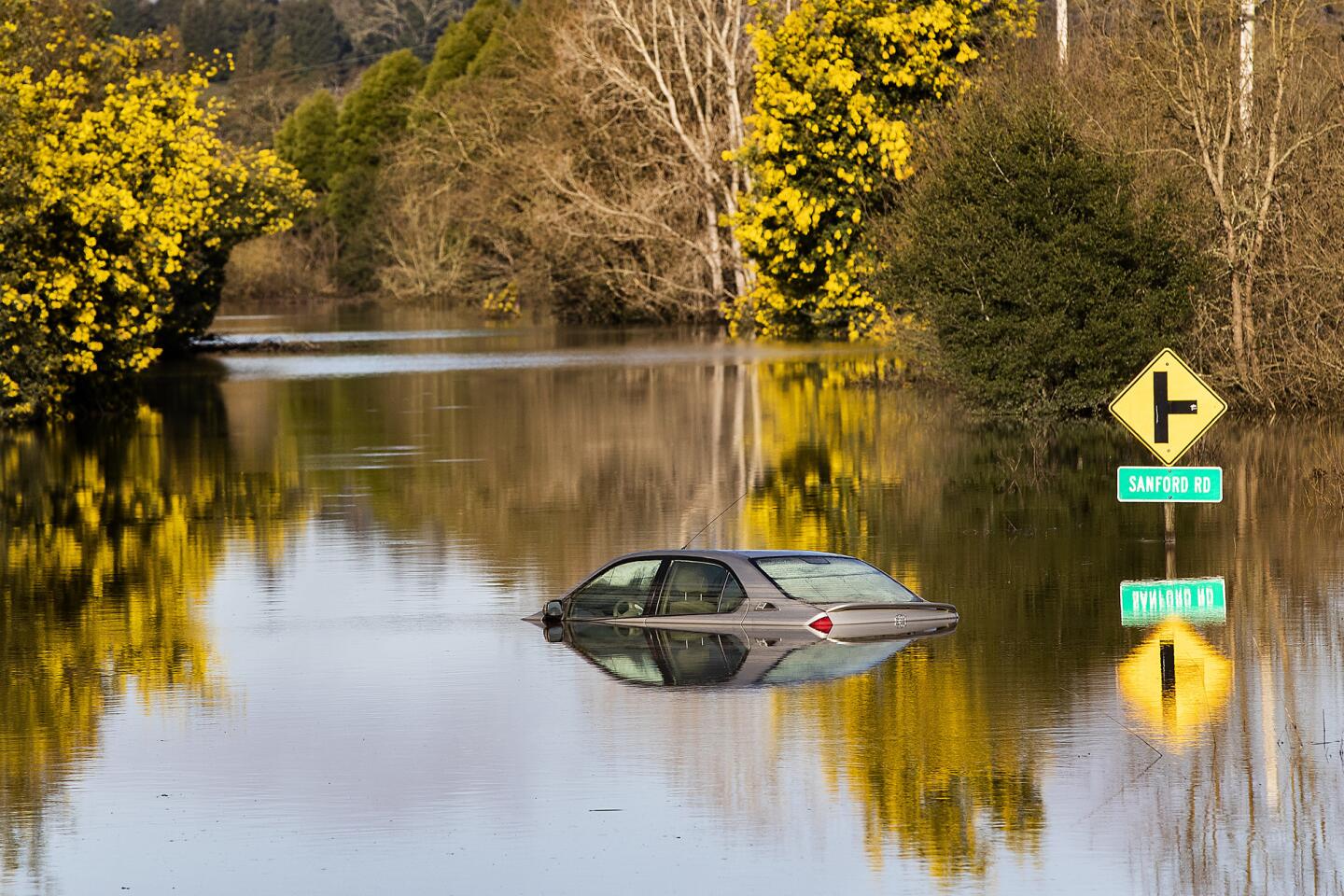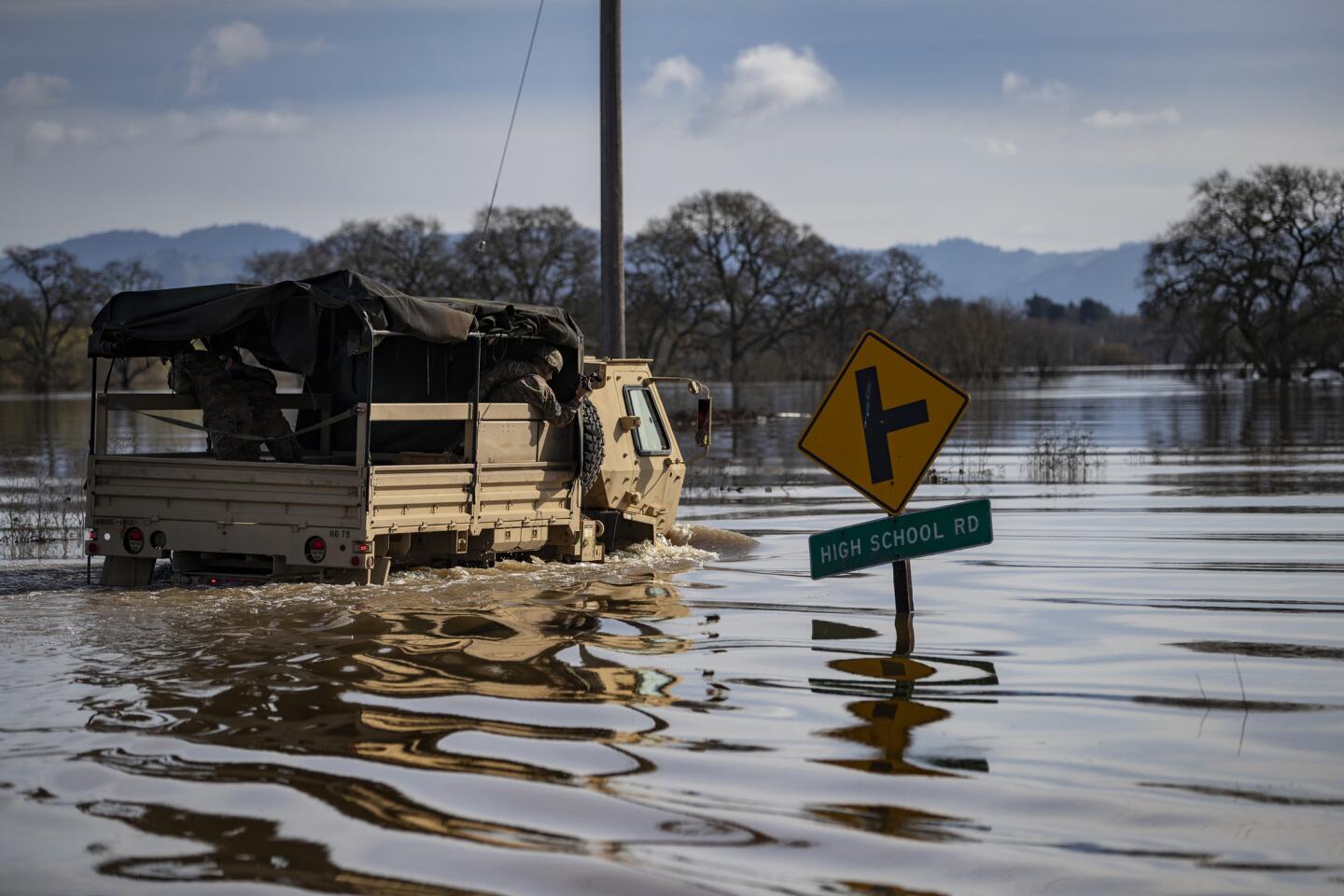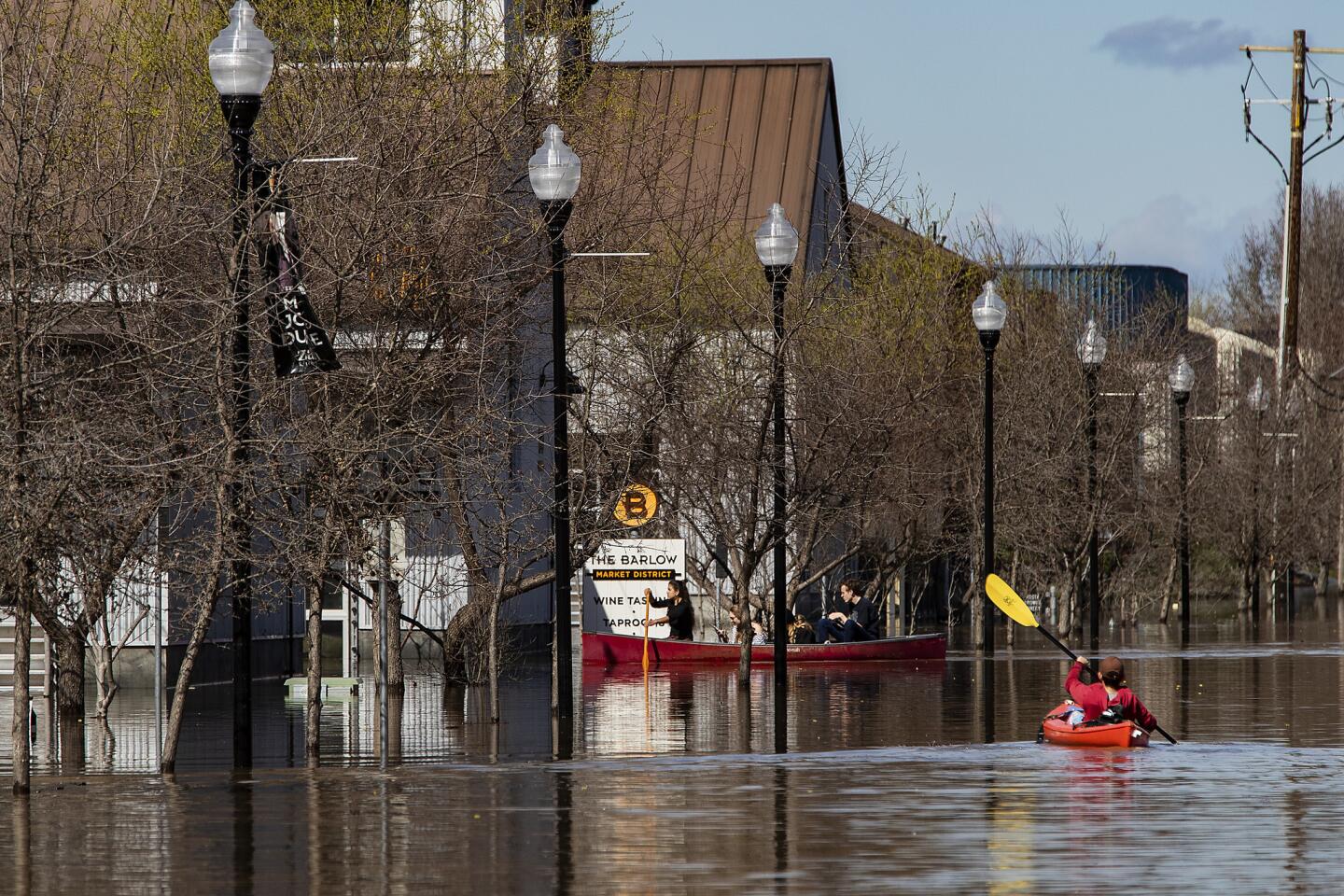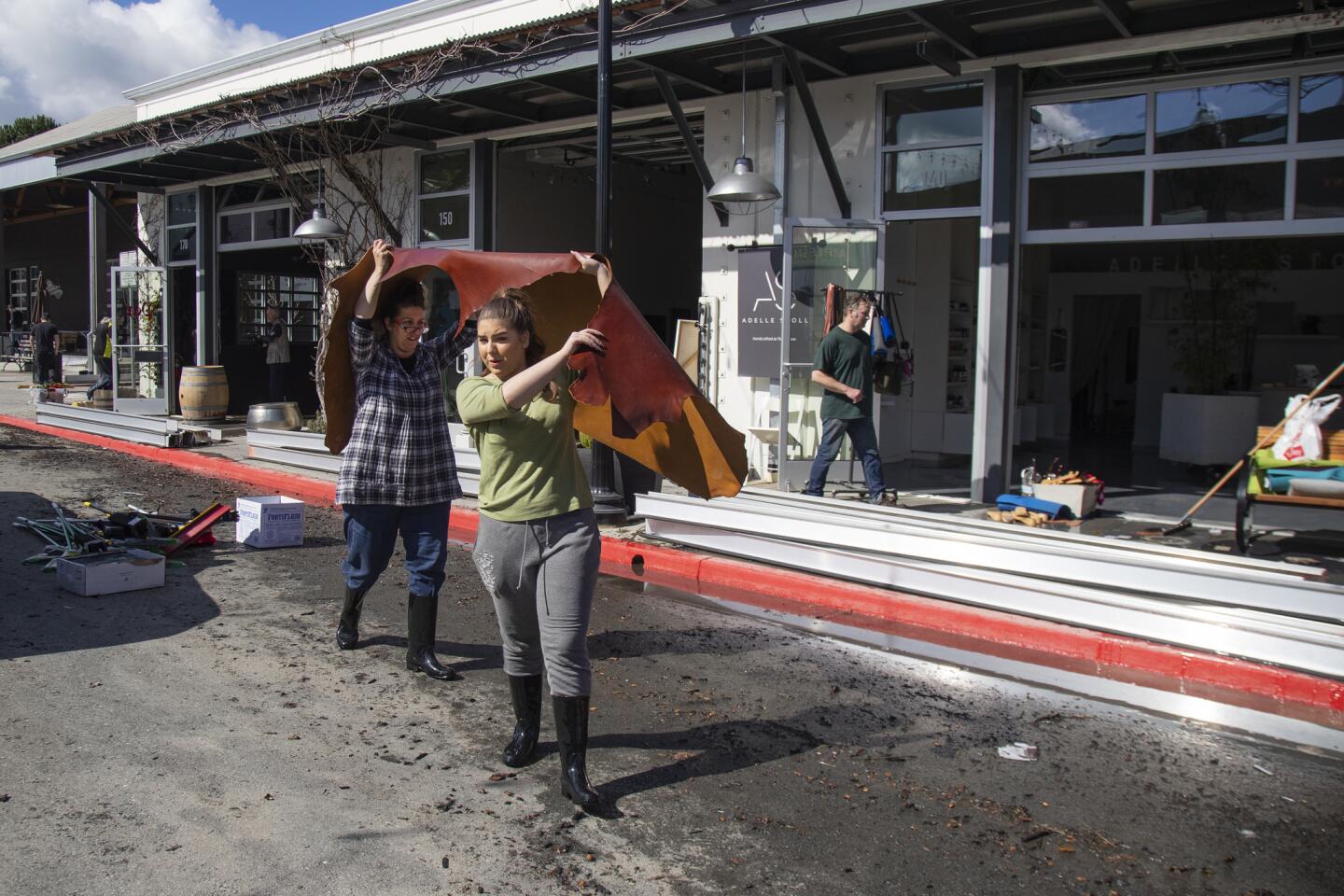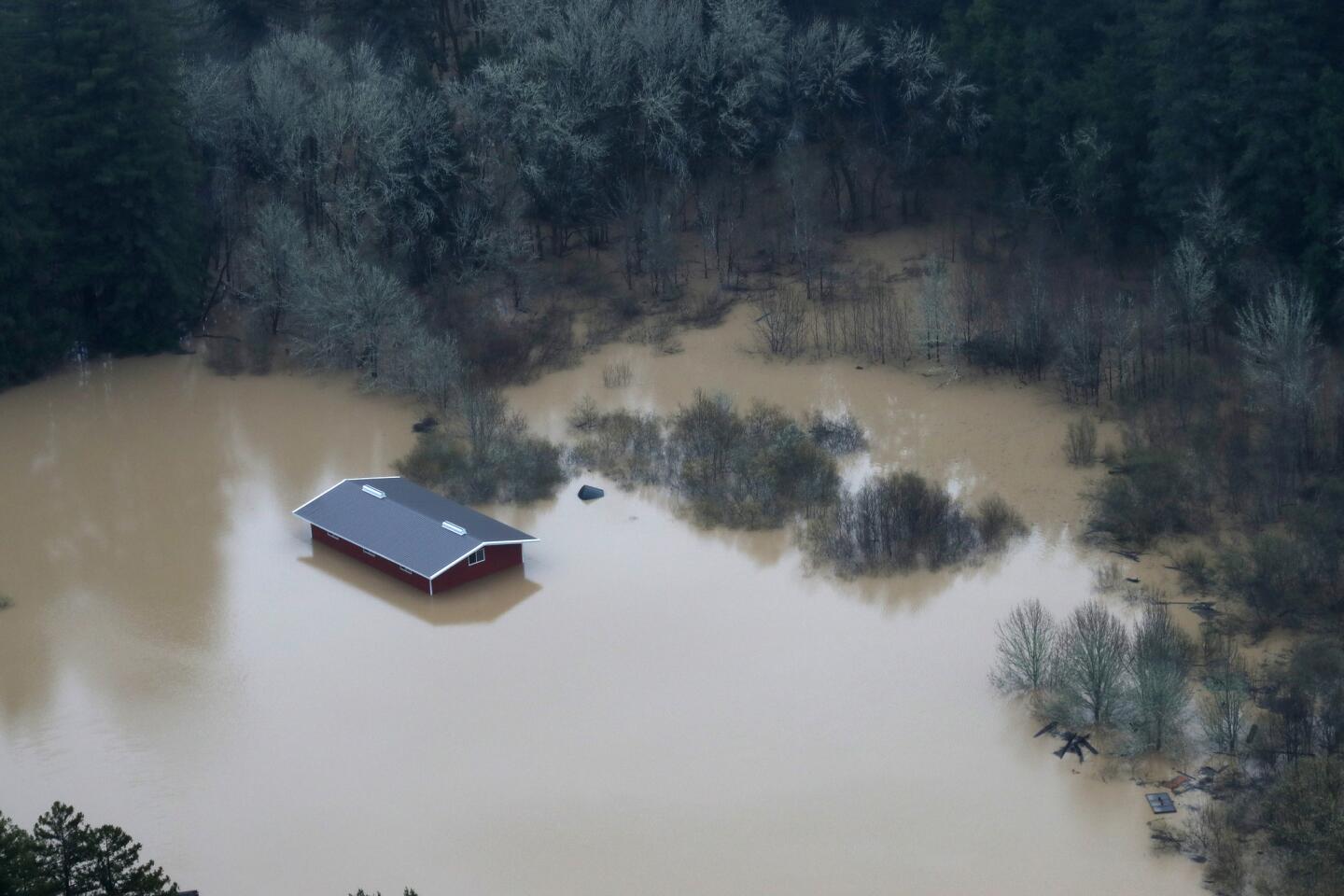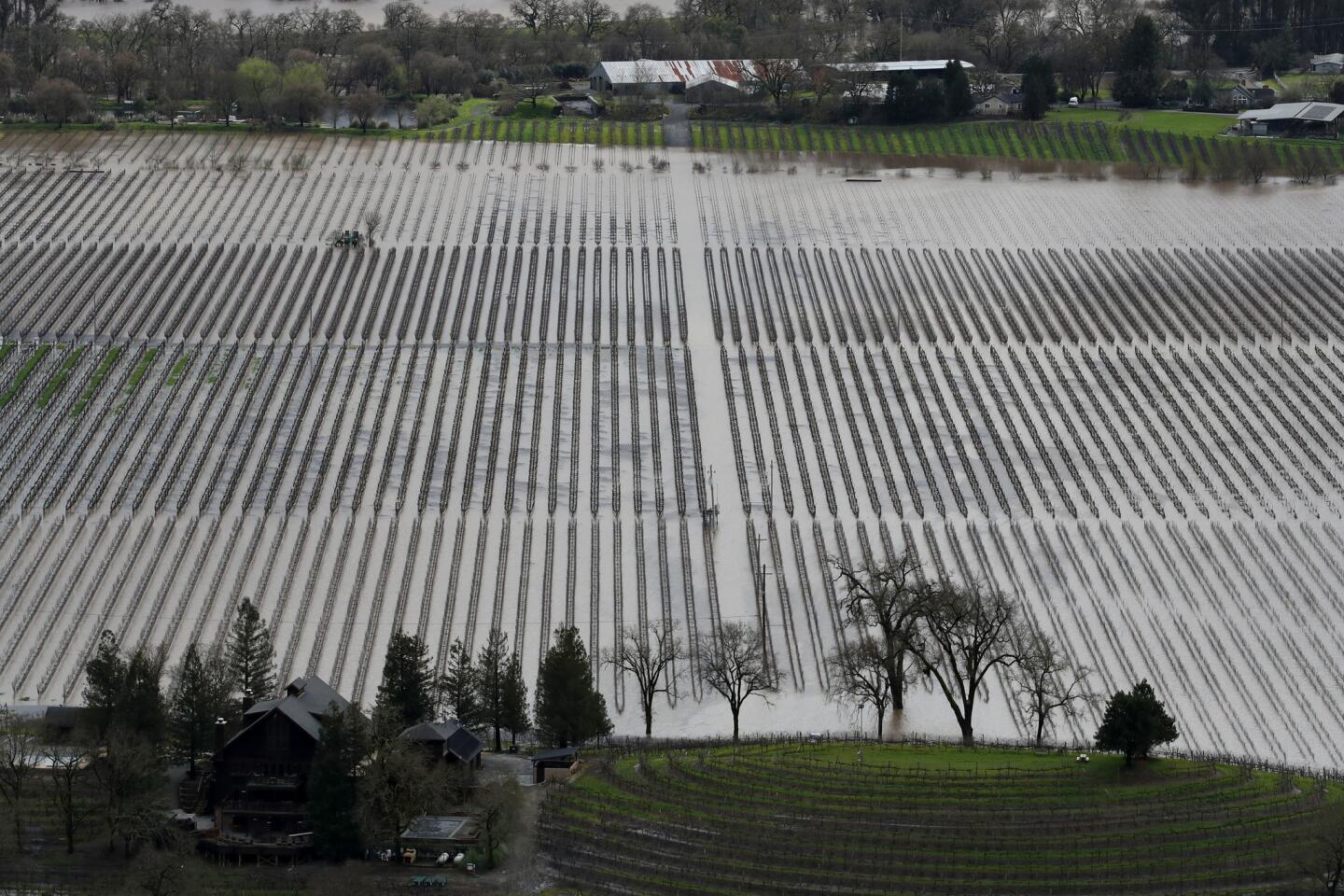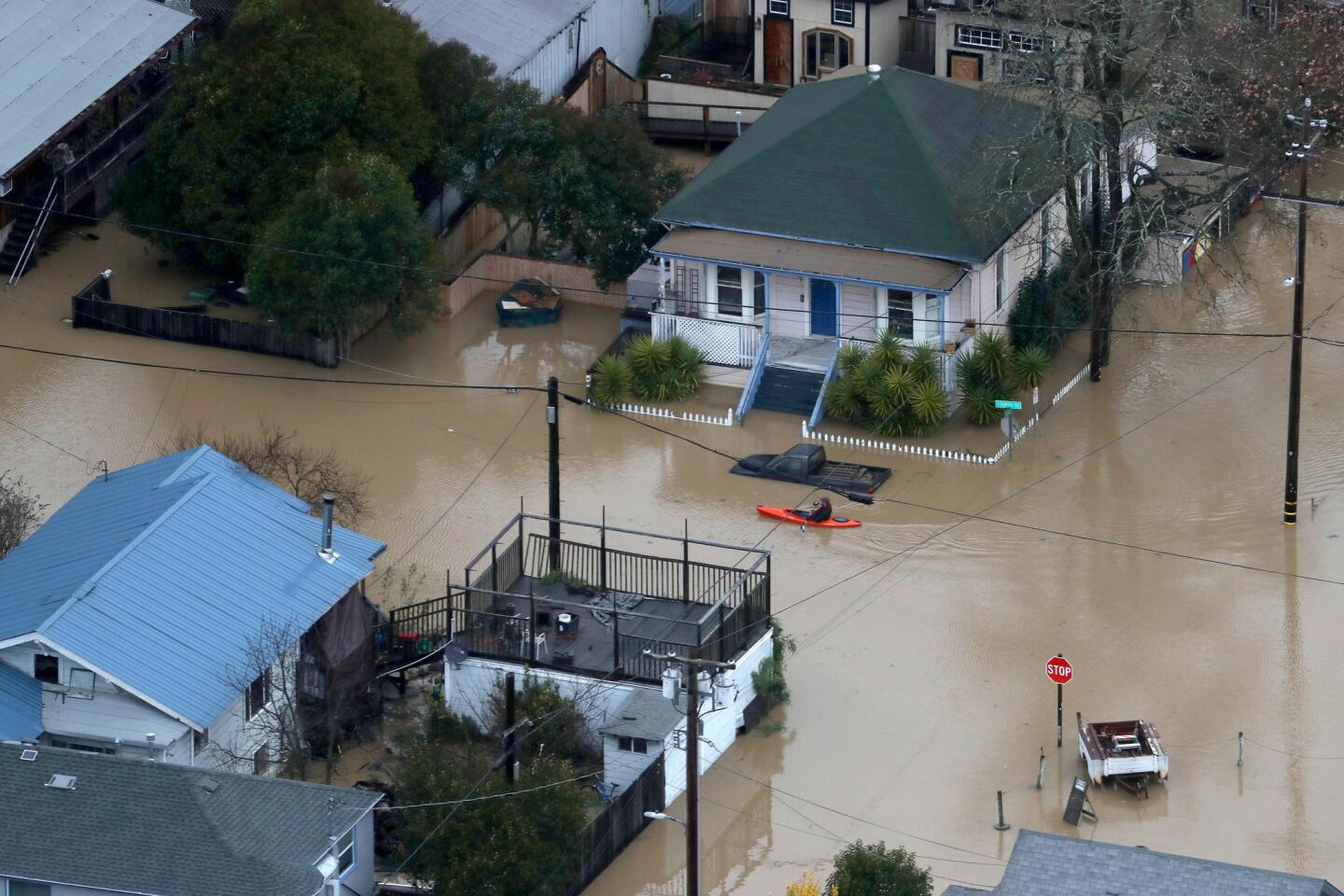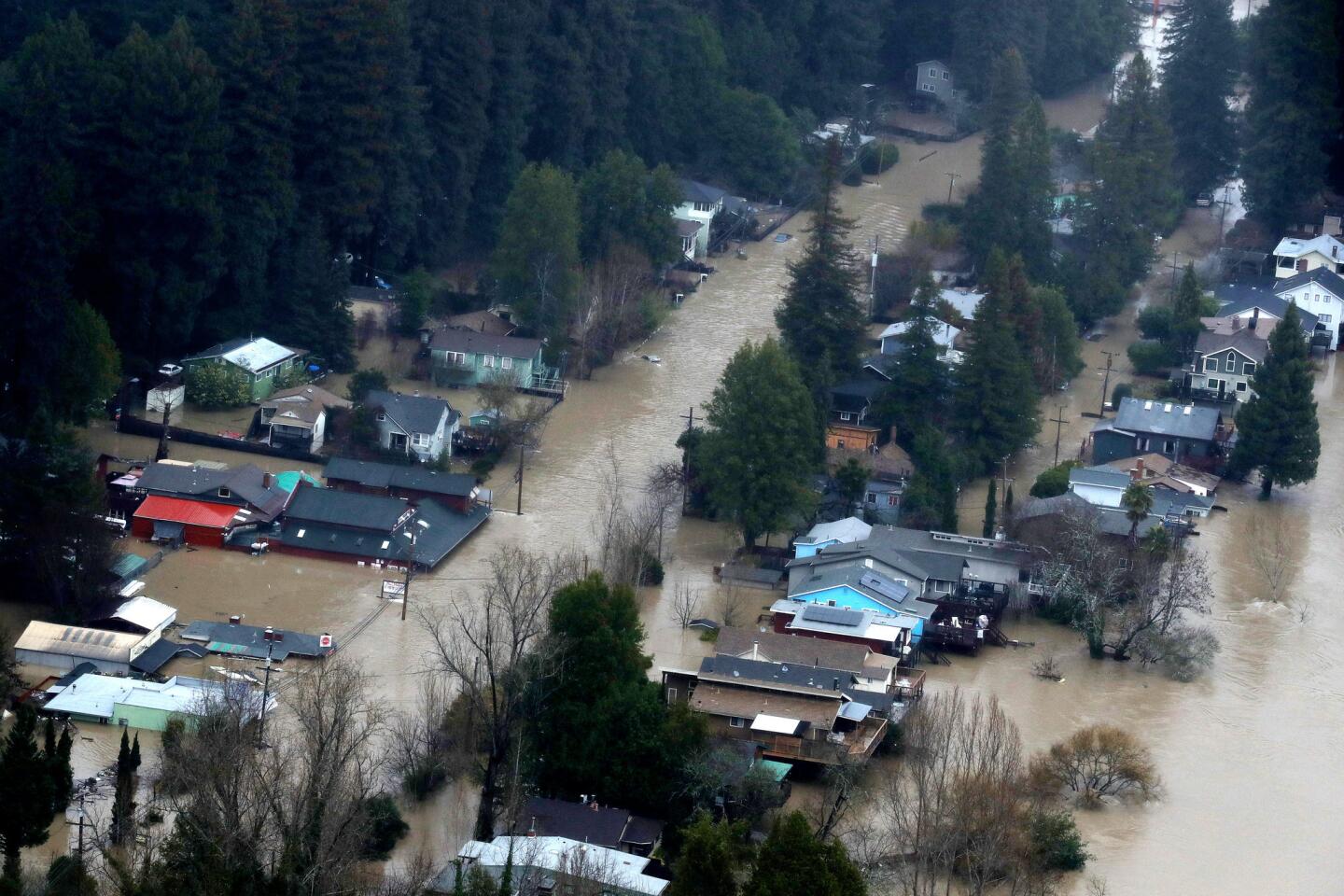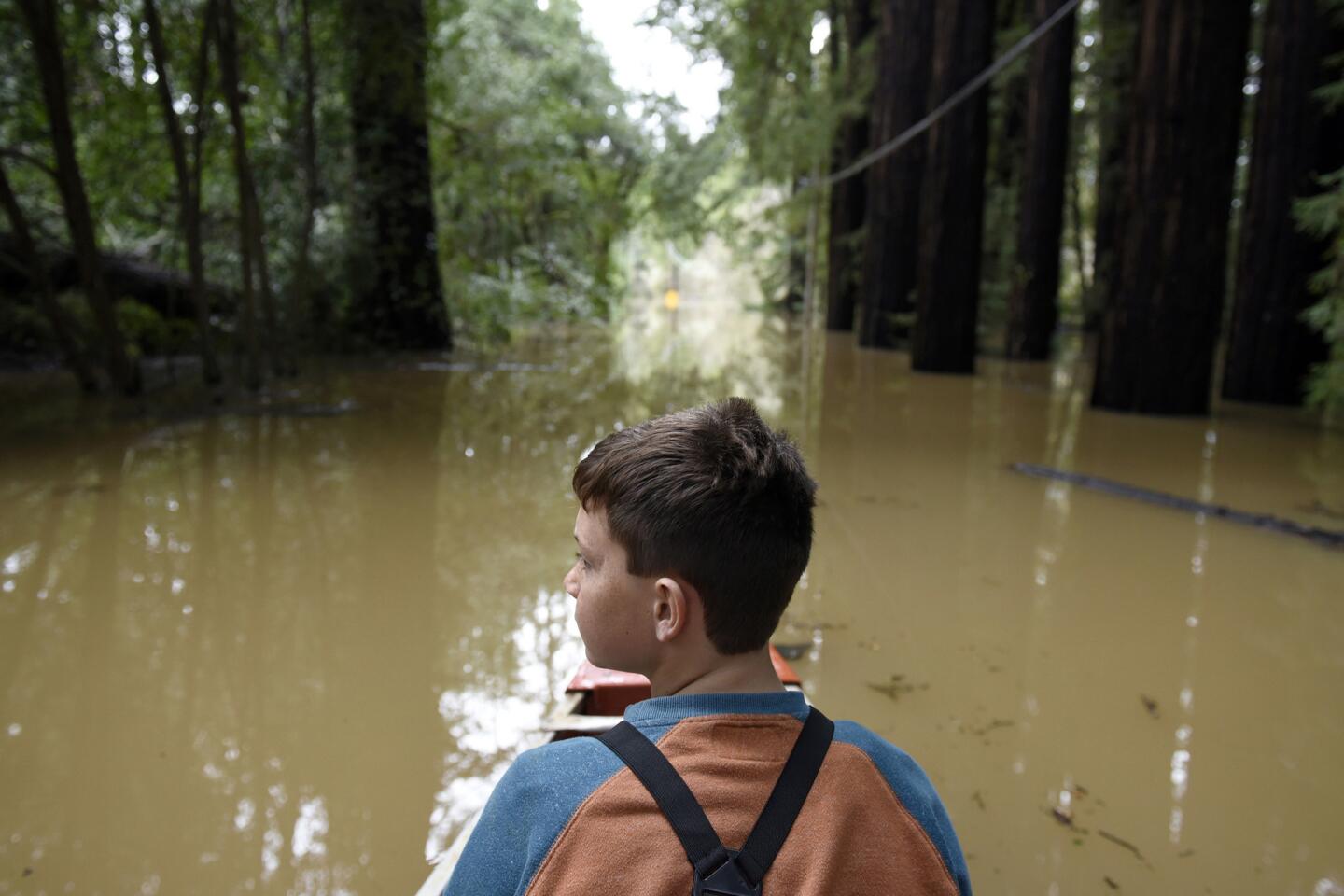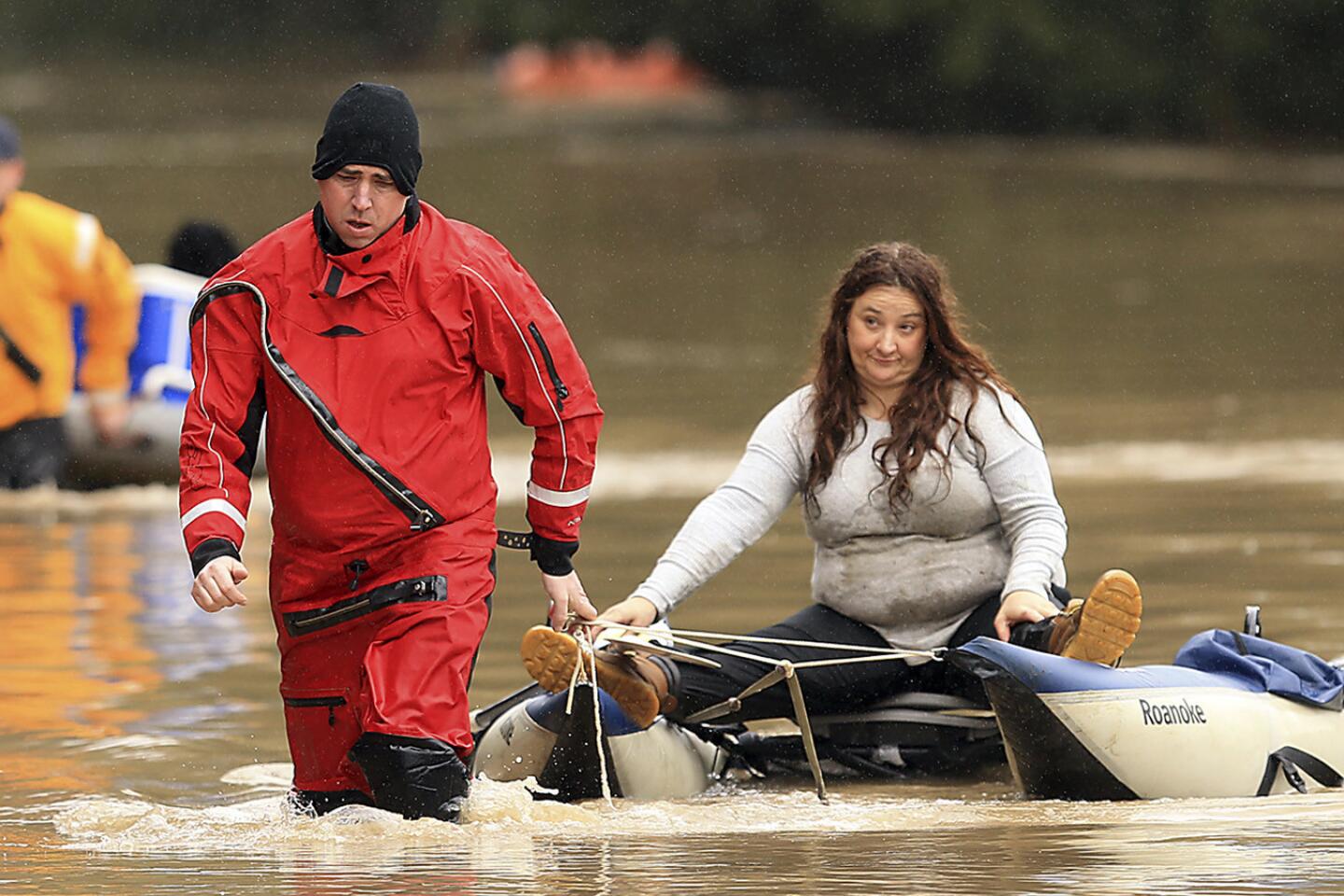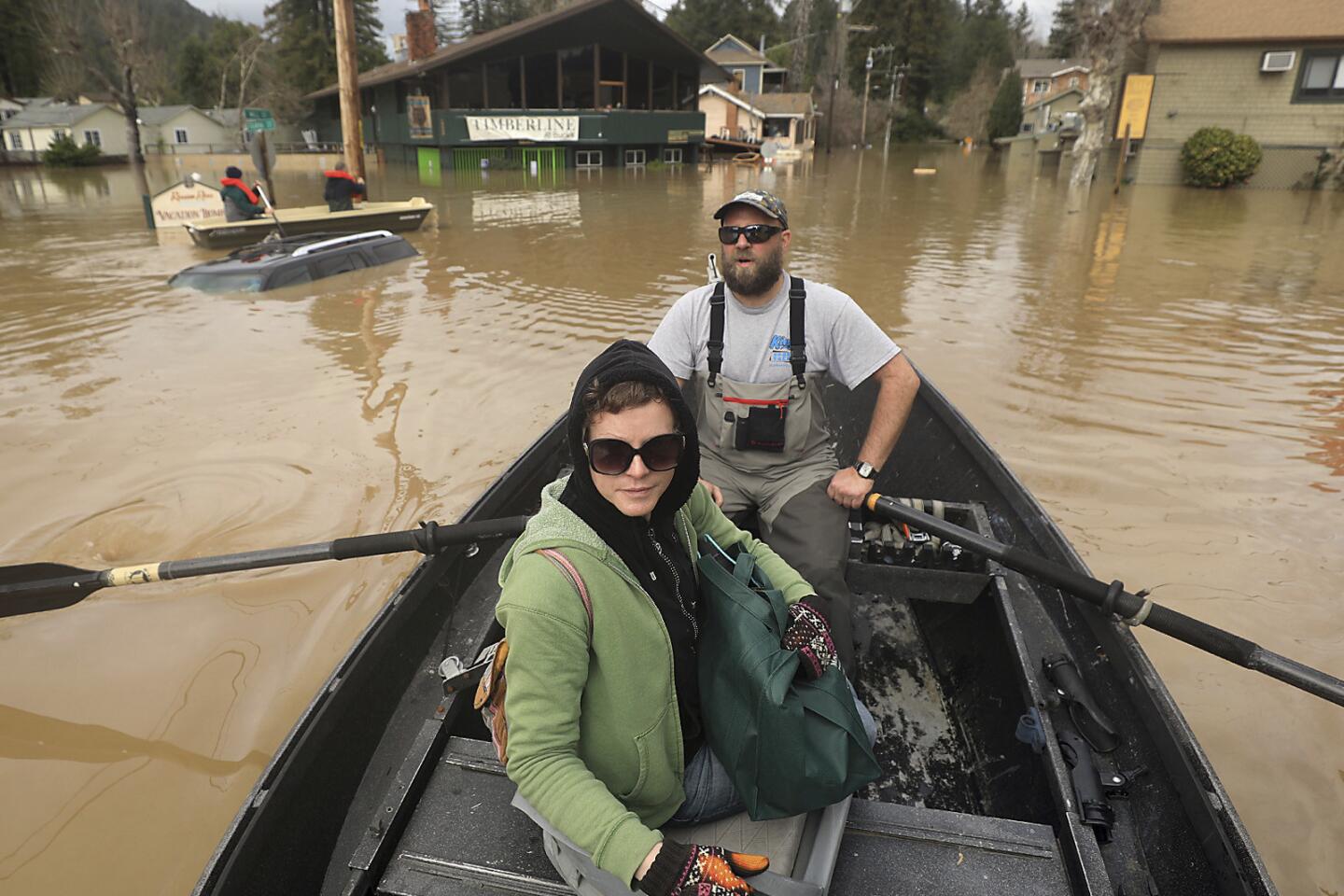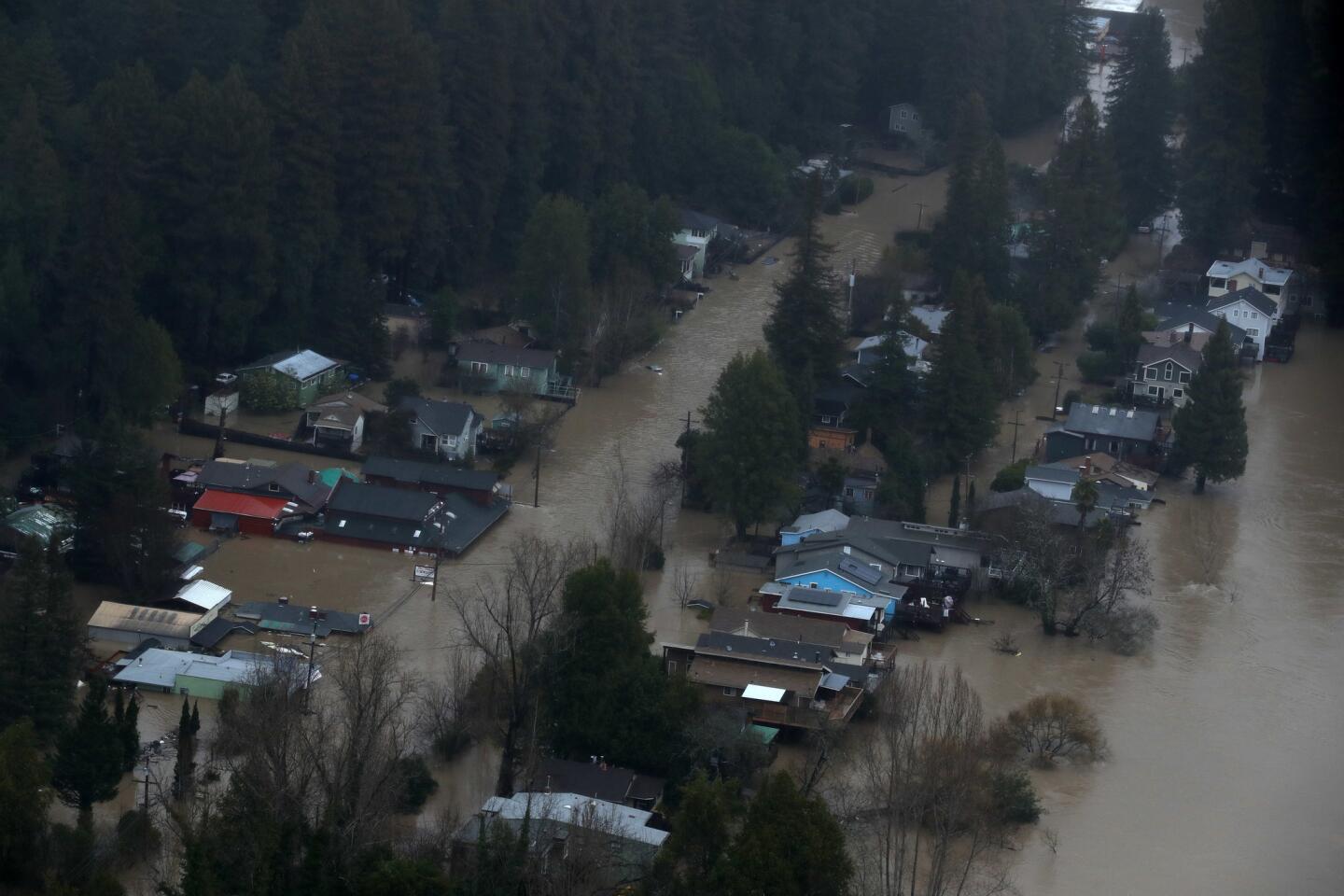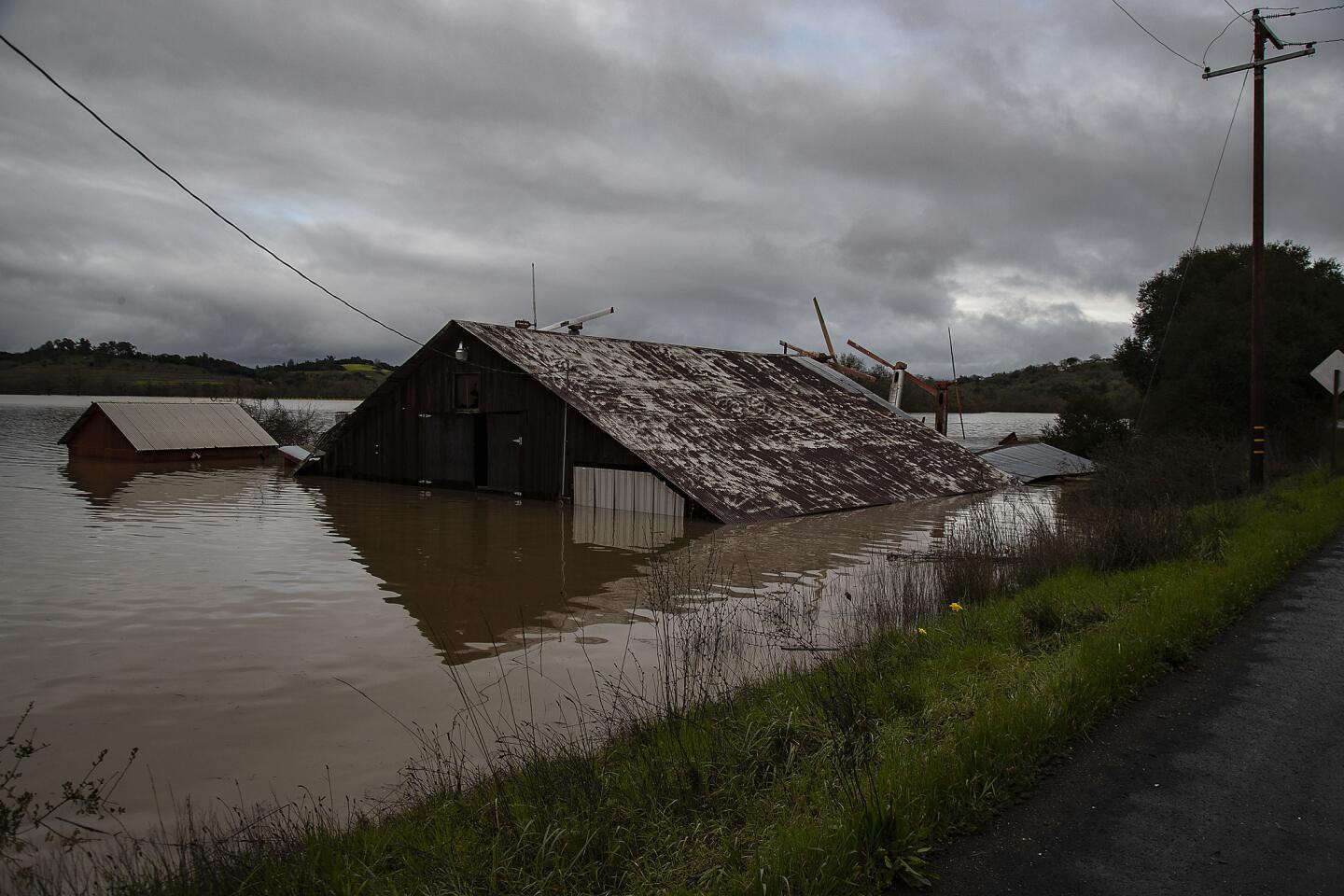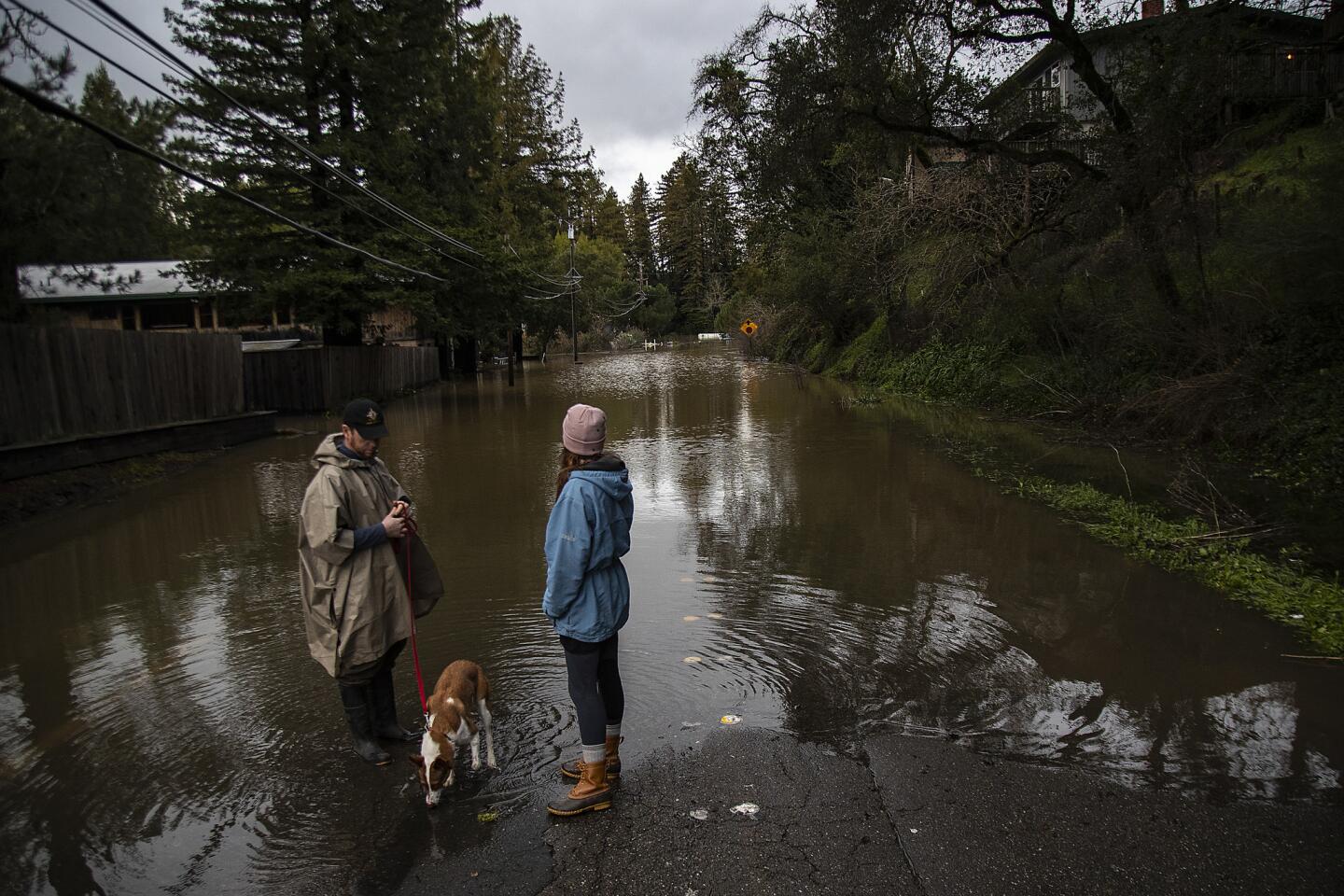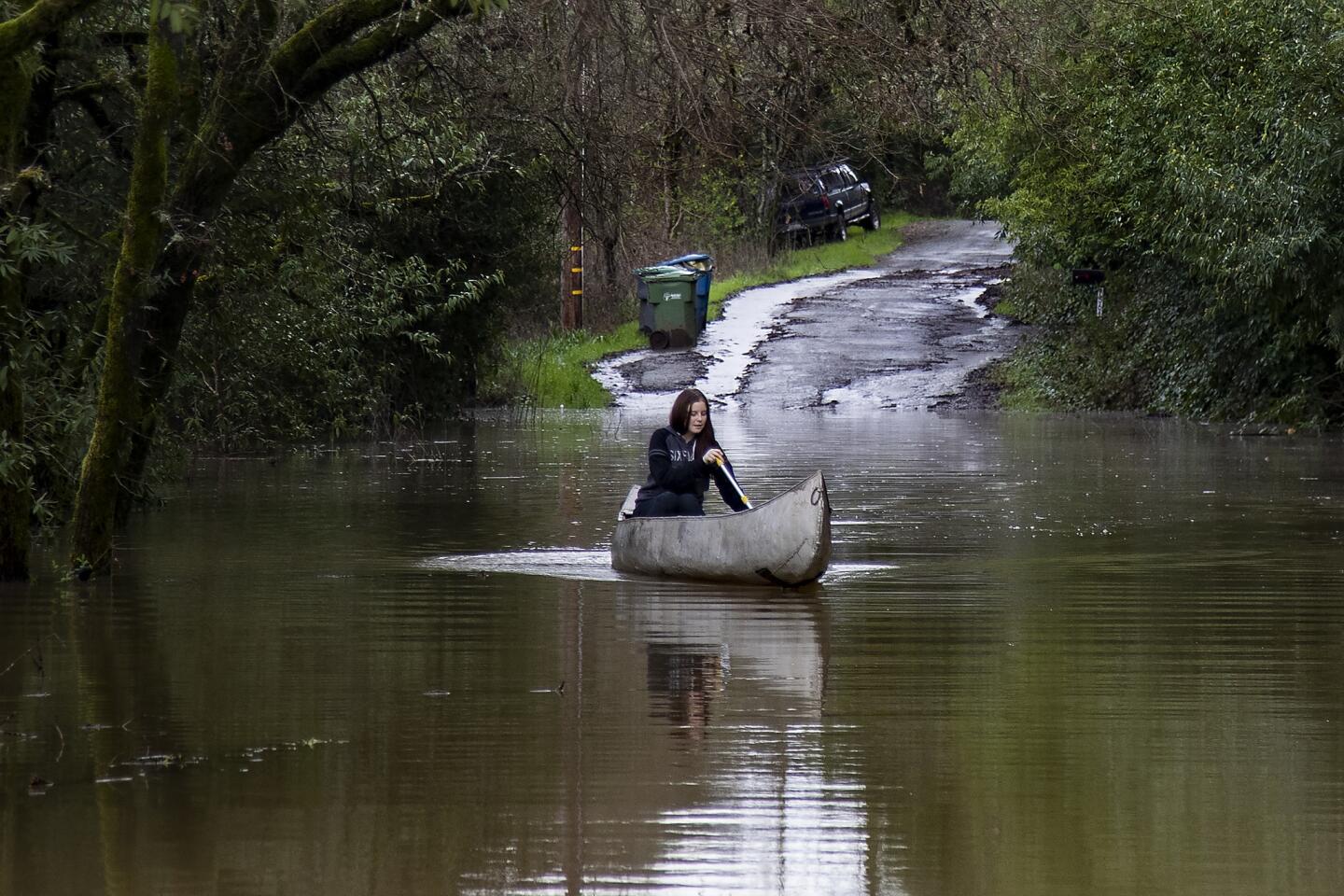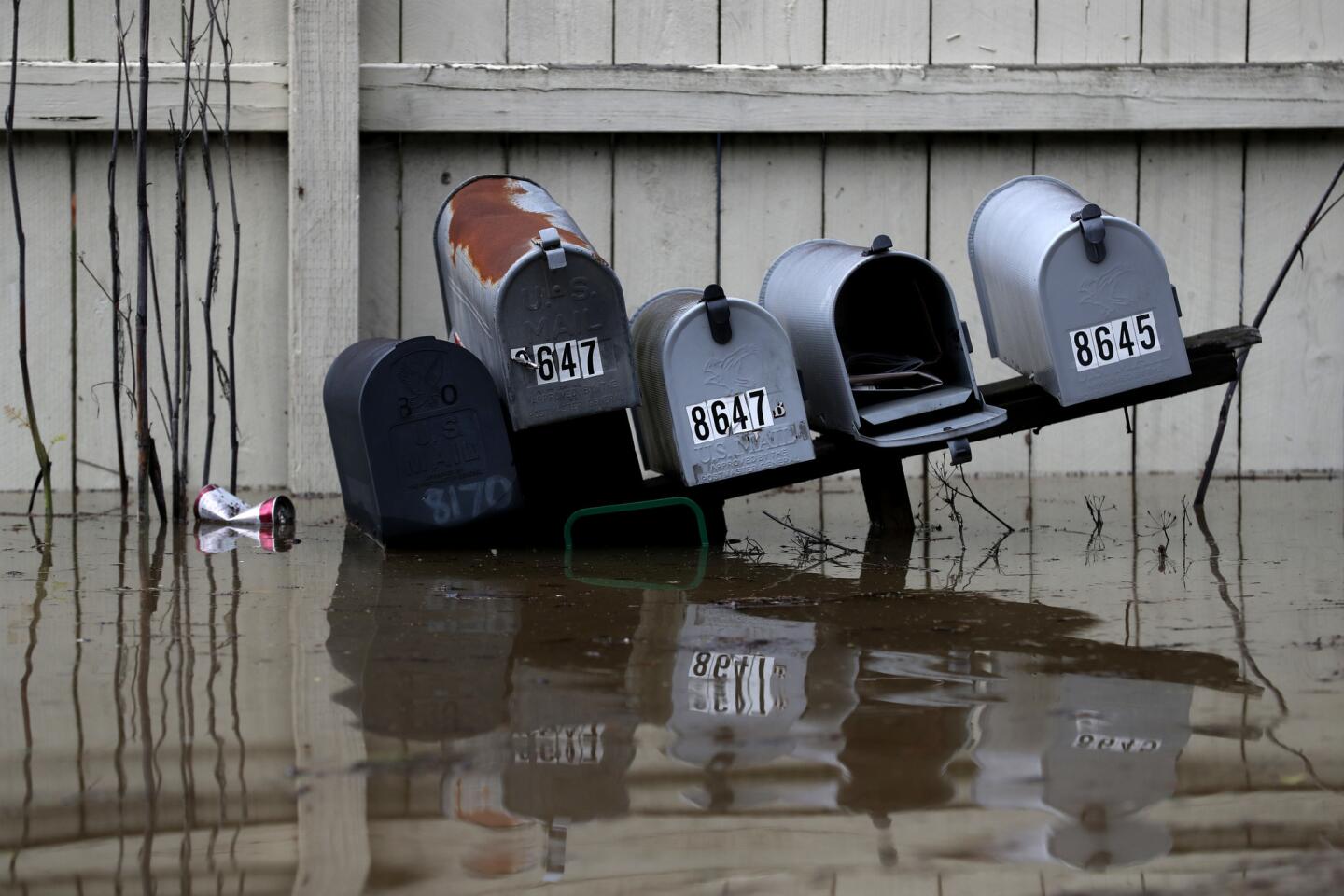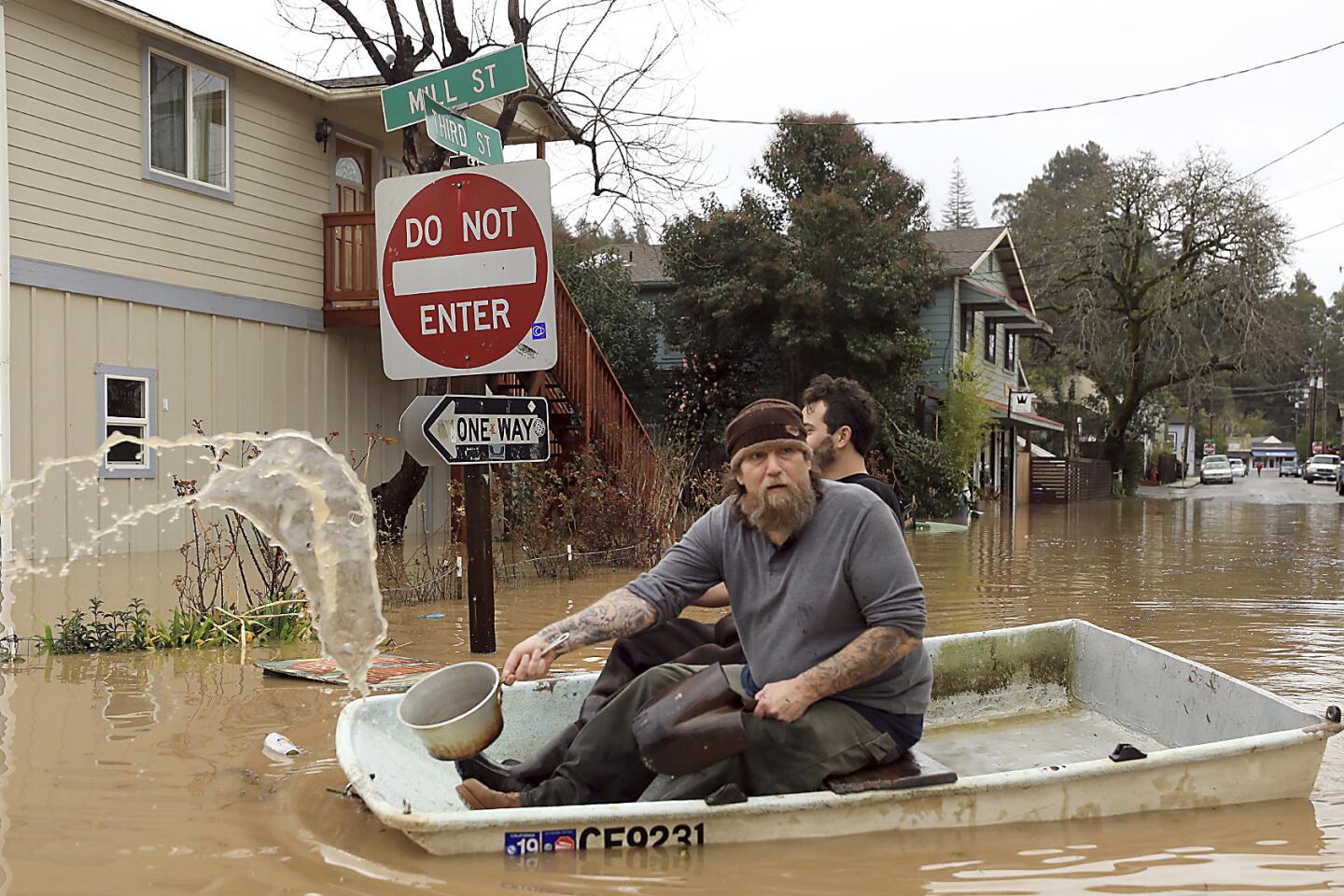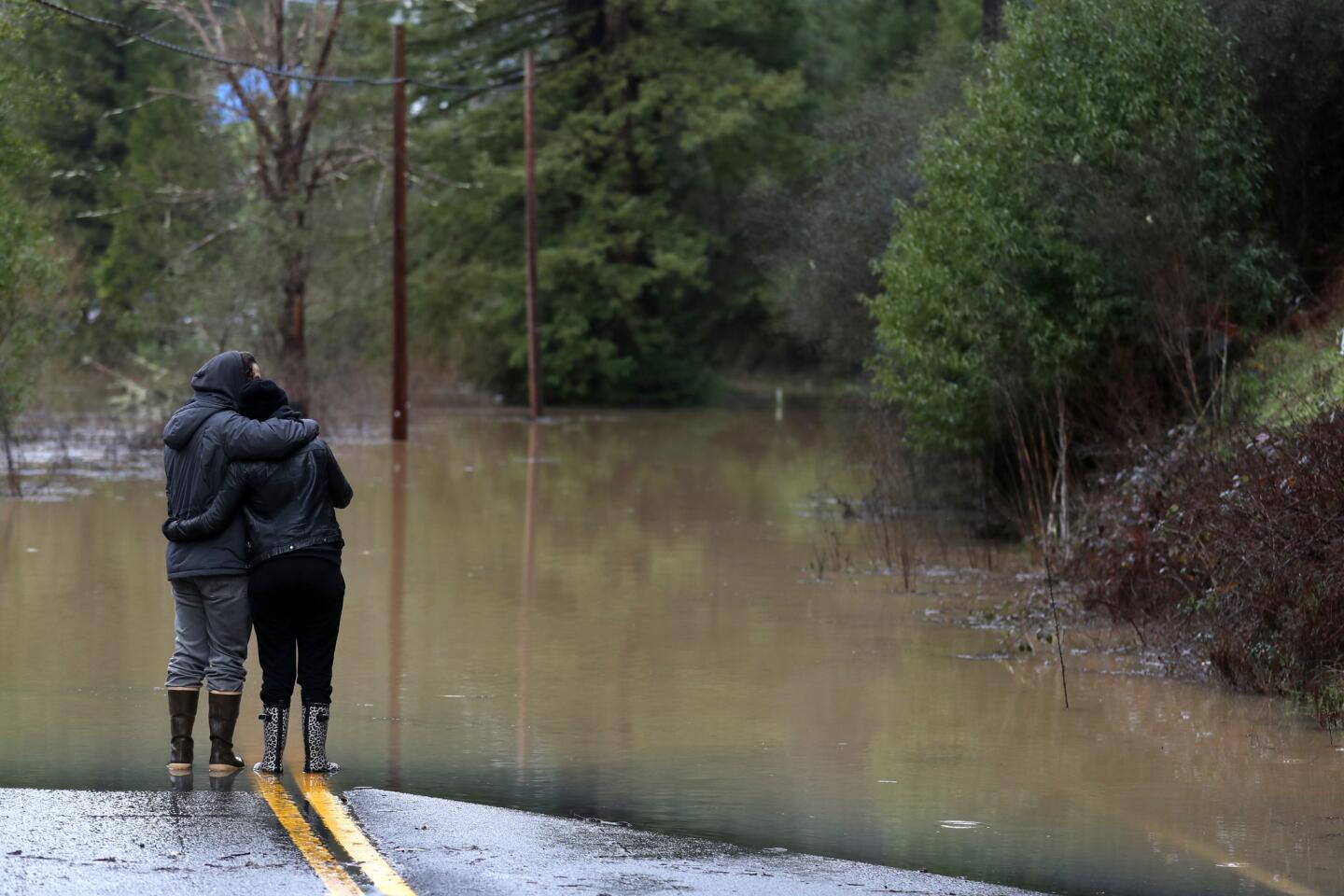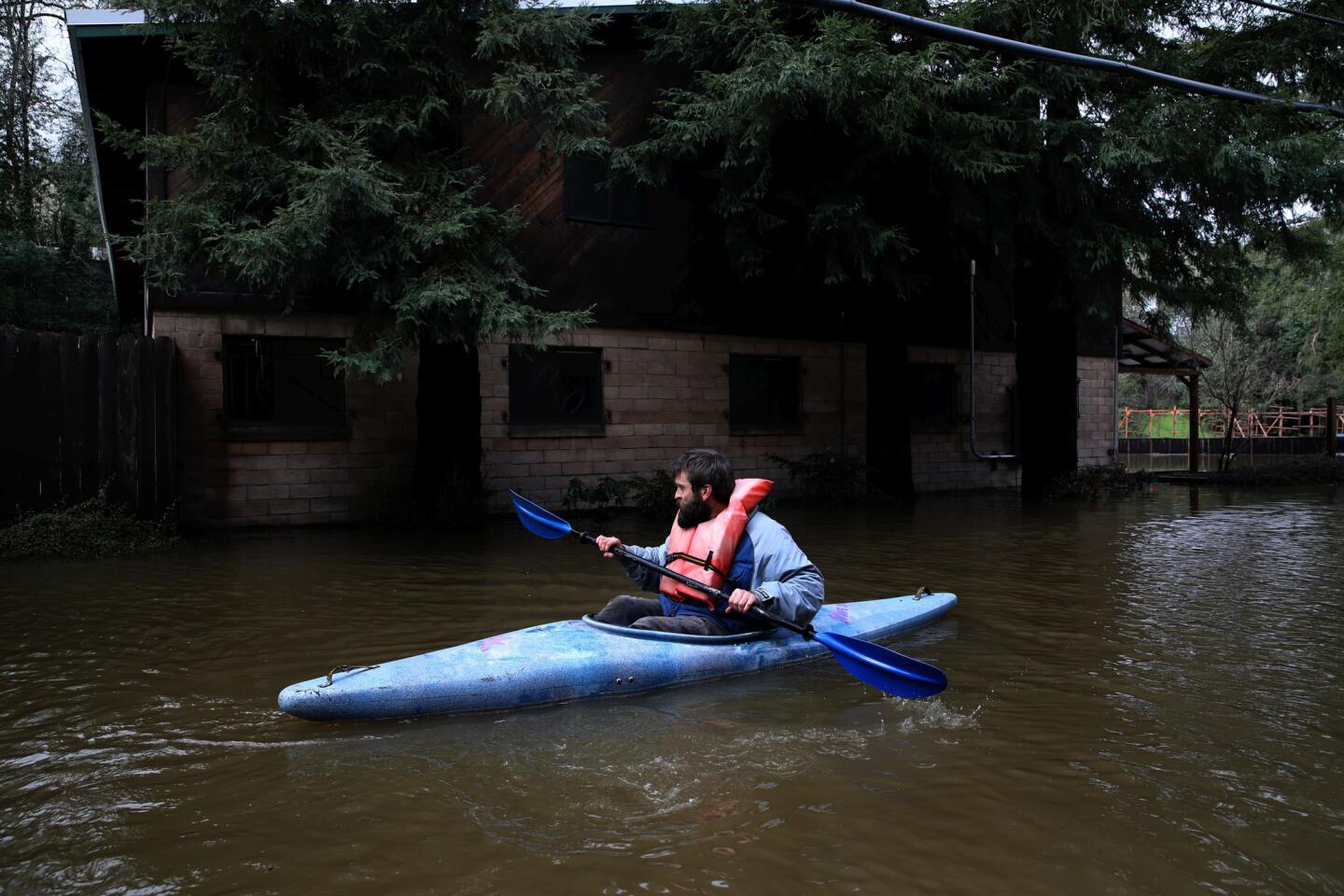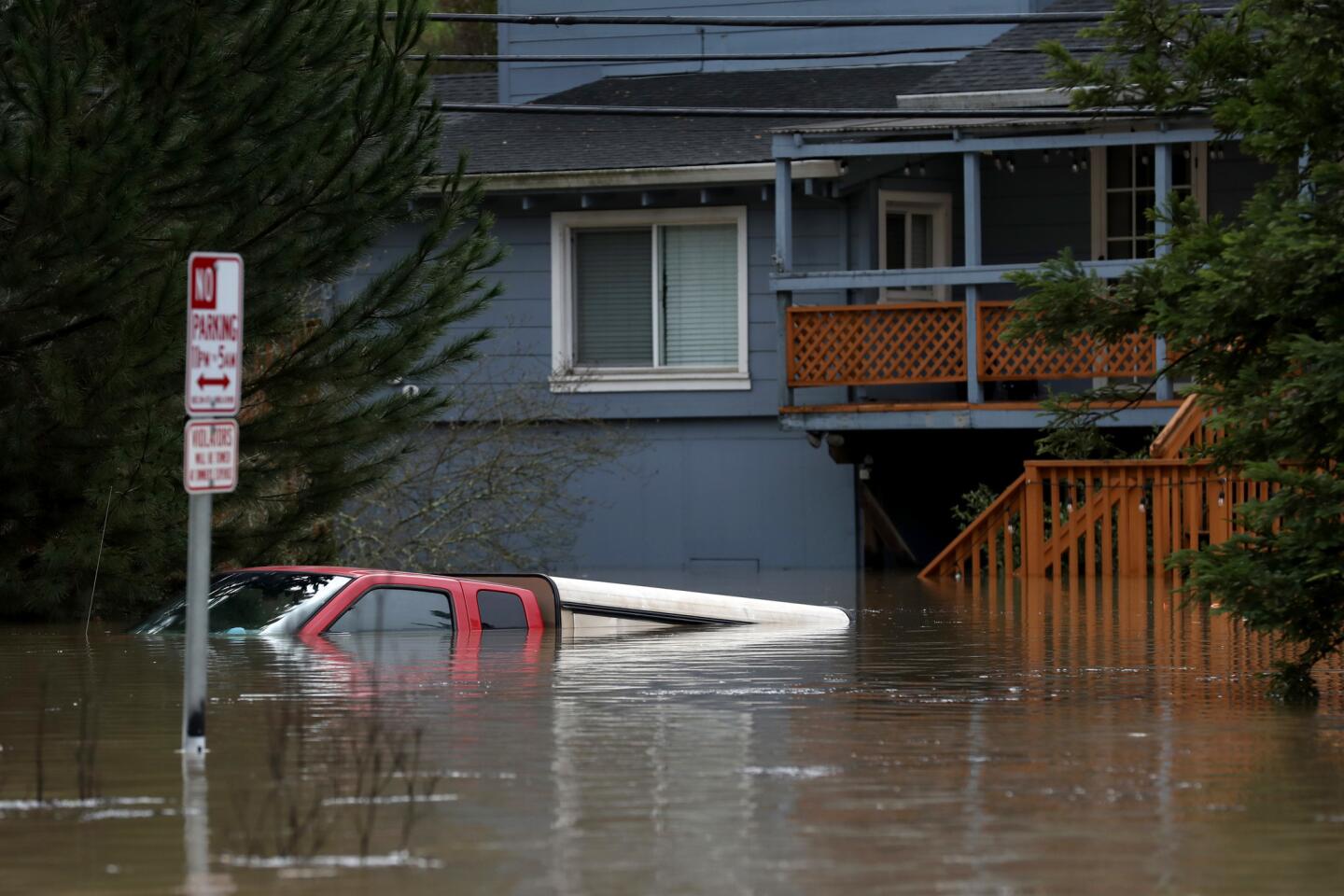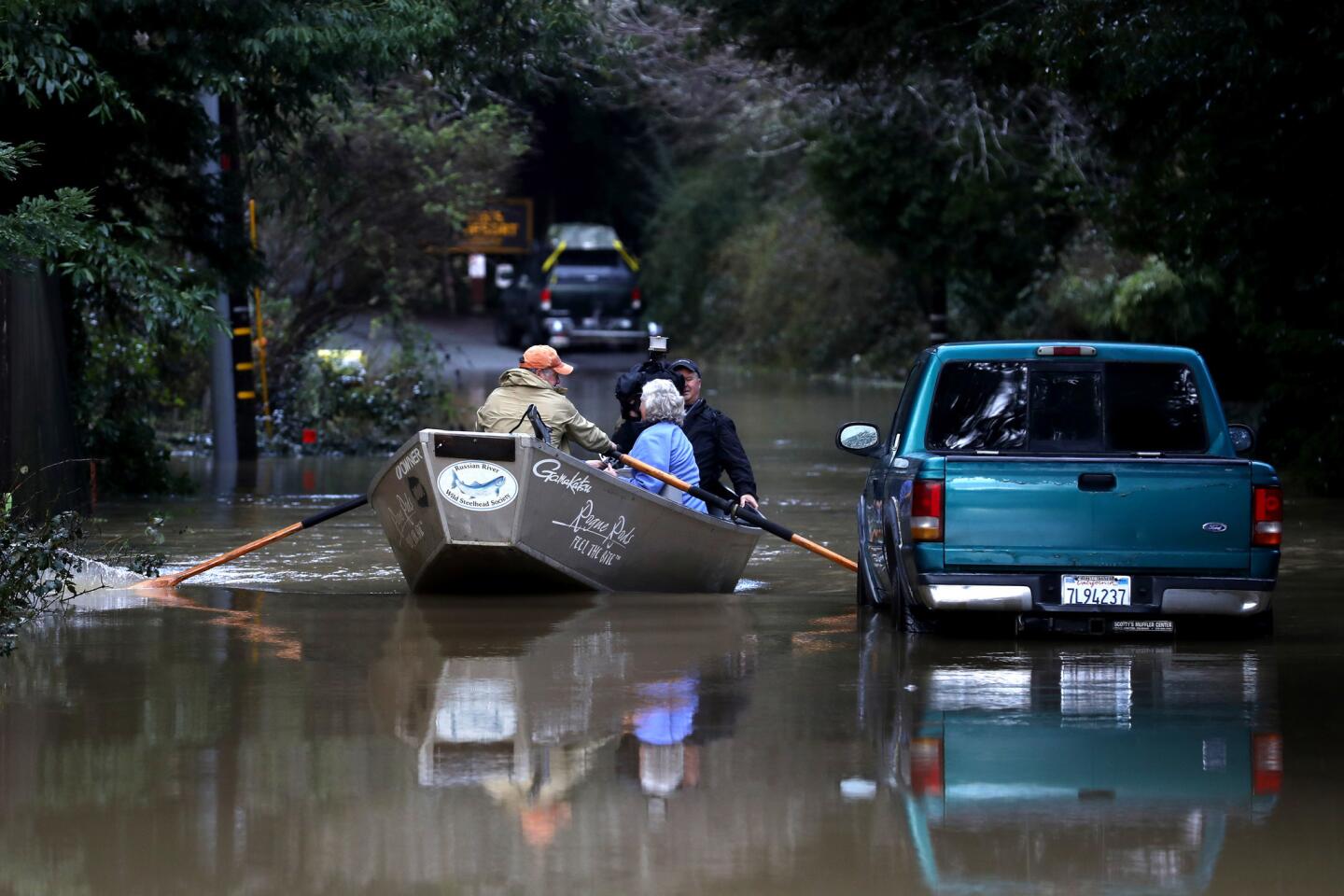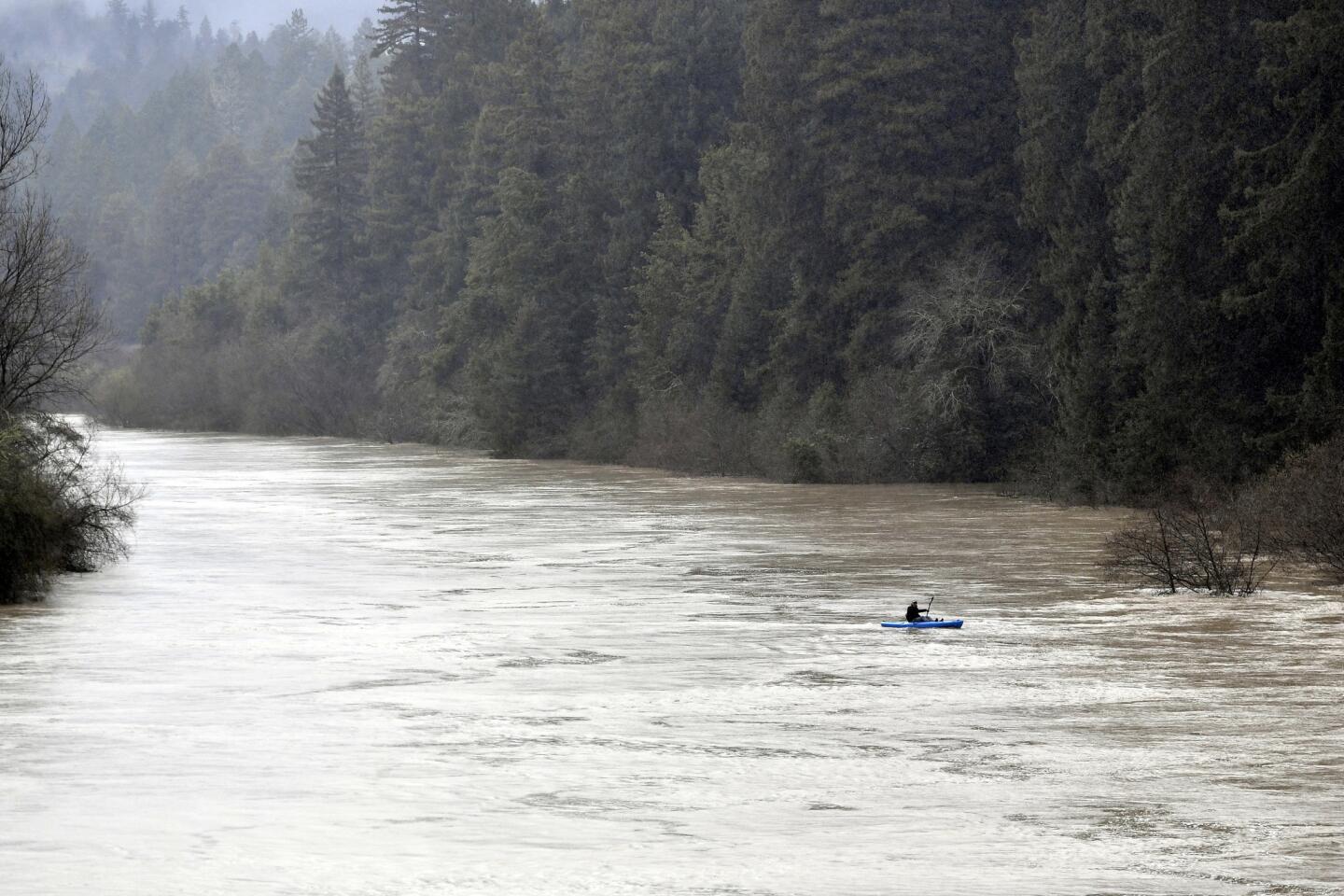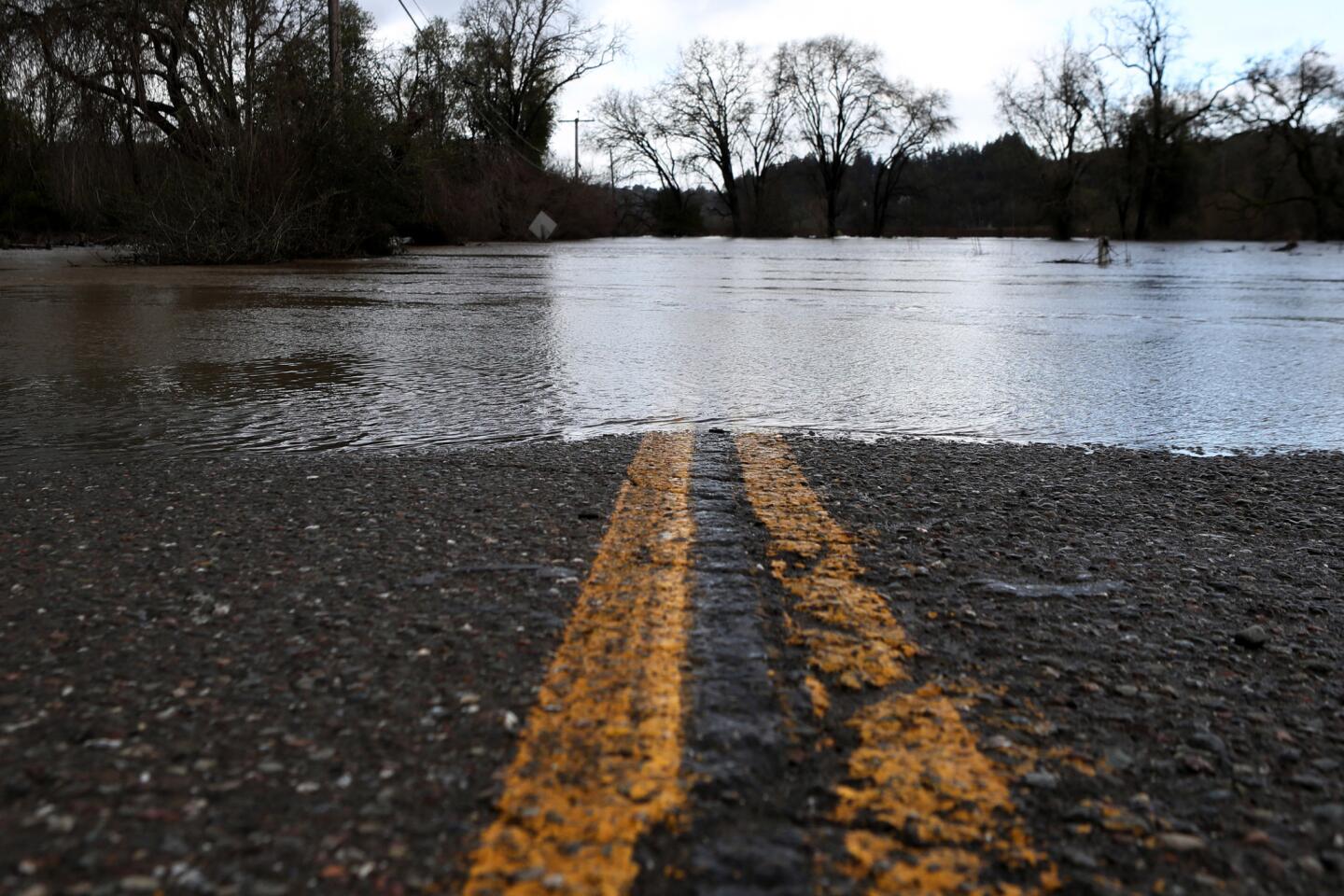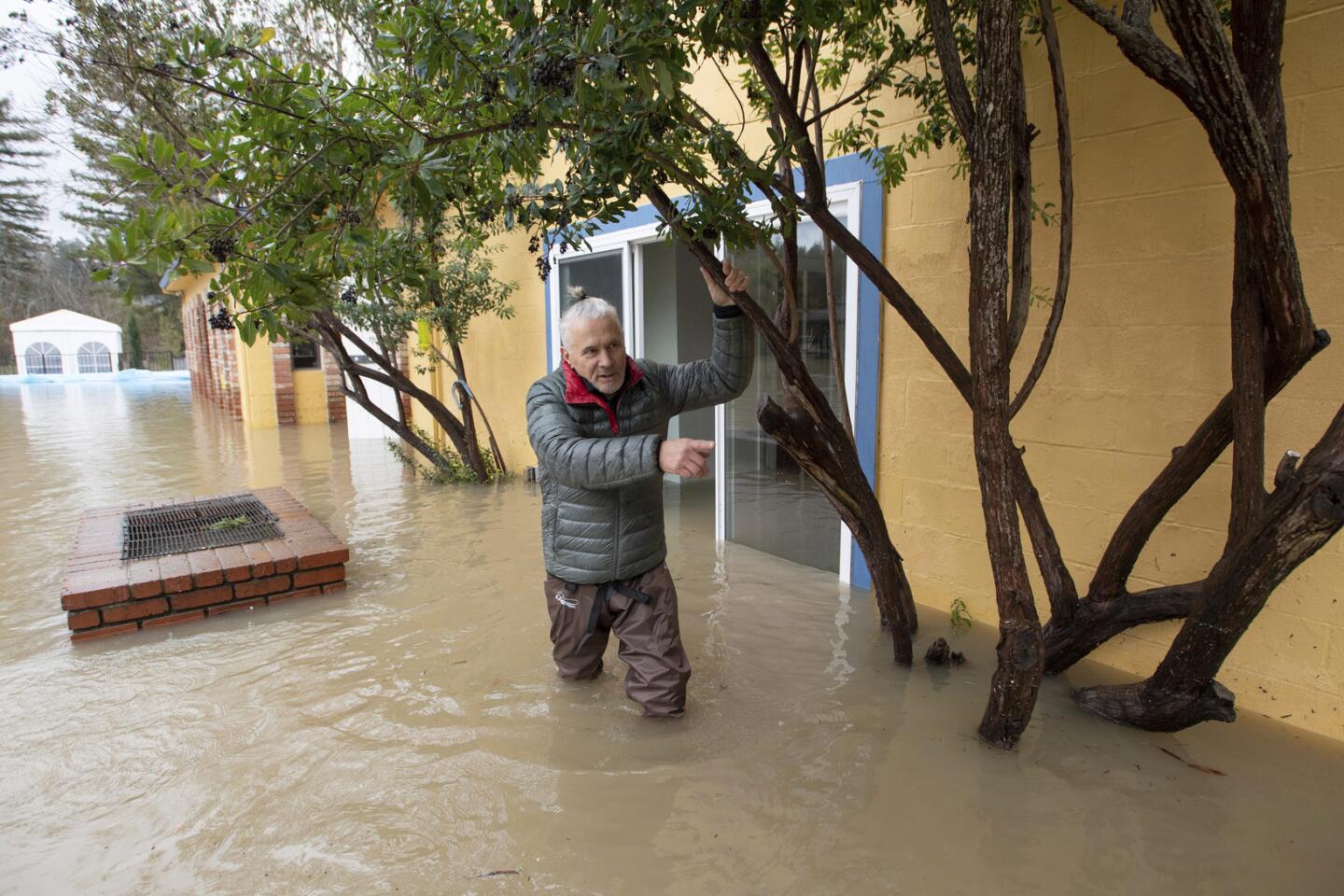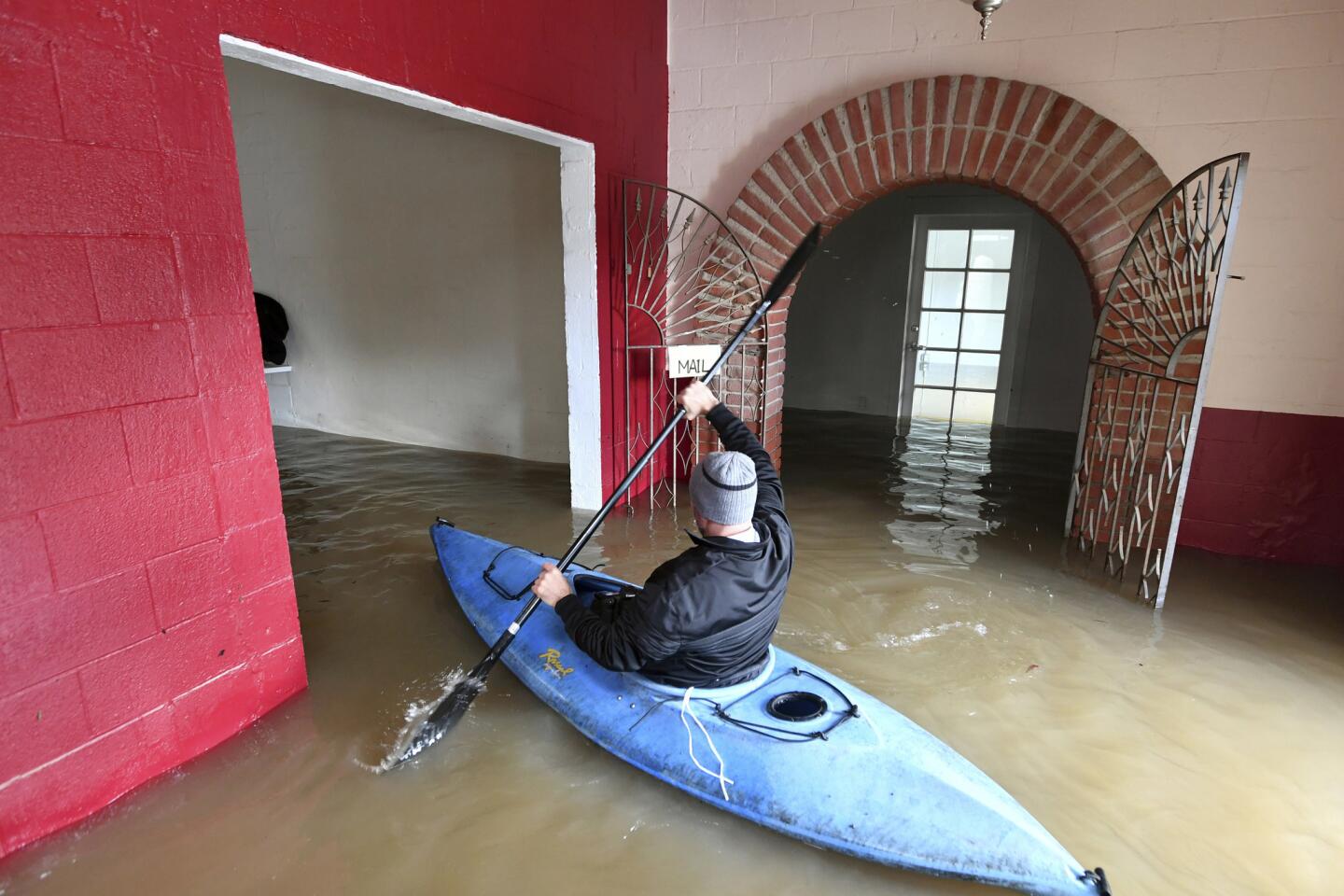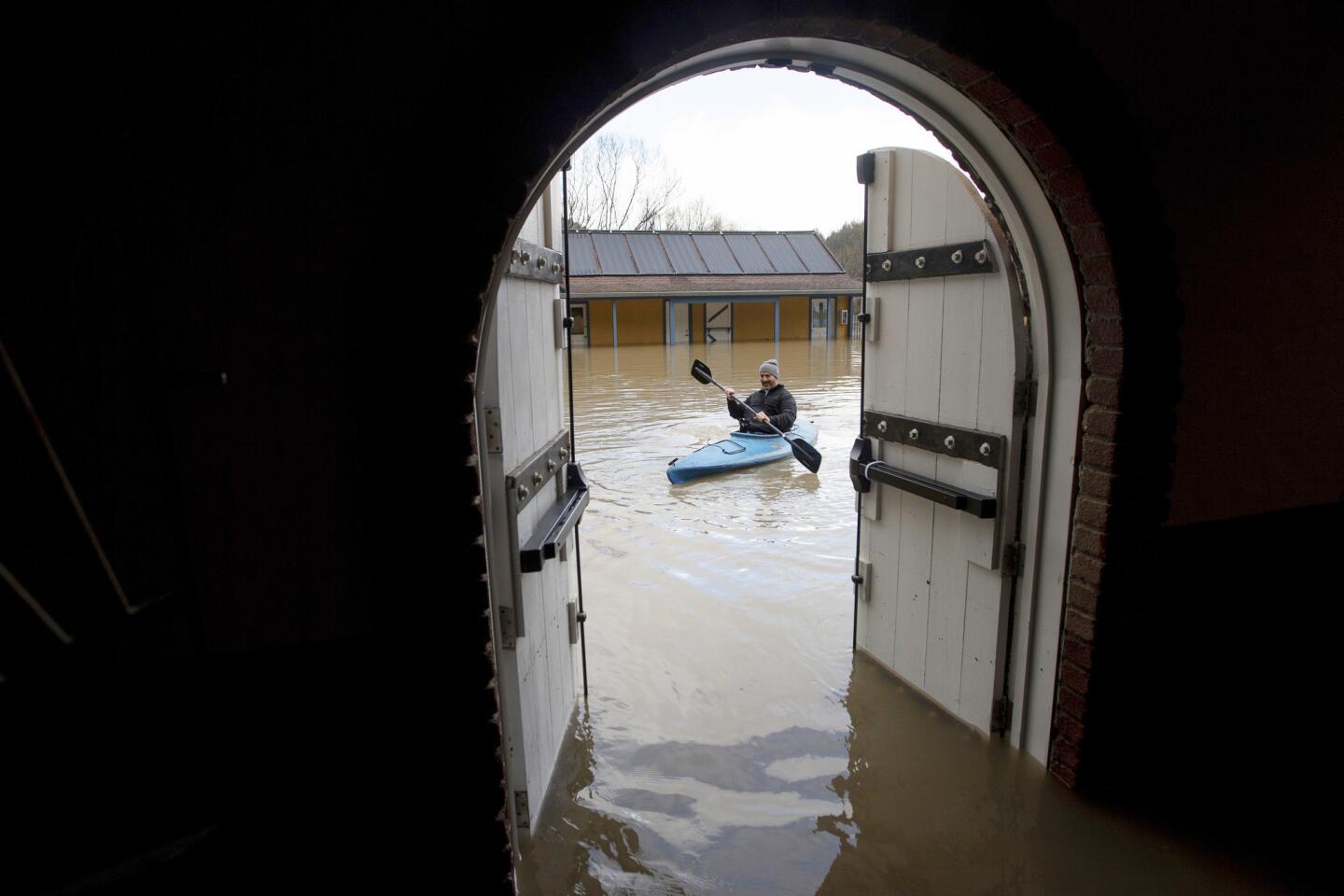Gov. Newsom declares emergency over Northern California flooding
Reporting from Forestville, Calif. — Gov. Gavin Newsom on Thursday declared a state of emergency in five Northern California counties where severe storms have led to flooding that has left some towns completely isolated.
The emergency proclamation requests immediate assistance for Amador, Glenn, Lake, Mendocino and Sonoma counties through the Federal Highway Administration’s Emergency Relief Program and the Office of Emergency Services to provide assistance to local governments.
Newsom previously declared an emergency for 21 counties across the state because of severe weather.
One of the winter’s strongest storms brought flooding across Northern California on Wednesday, with no region hit harder than Guerneville and the Russian River Valley, which has been inundated repeatedly over the decades.
Some 3,600 people in about two dozen communities near the river were evacuated by the flooding, which prompted the Sonoma County Board of Supervisors to declare a local emergency. Authorities warned that those who chose to stay in their homes could be stuck there for days.
“We have waterfront property now,” said Dane Pitcher, 70, who watched from the third-story window of his bed and breakfast, the Raford Inn in Healdsburg, as rising water pooled to create a 100-acre lake in front of his property. “We’re marooned for all intents and purposes.”
The Russian River, which sat about 10 feet Monday morning, rose an extraordinary 34 feet over two days, said Carolina Walbrun, meteorologist with the National Weather Service in the Bay Area. By Wednesday afternoon, the river had swollen to 44.3 feet — more than 12 feet above flood stage. One rain gauge near Guerneville reported receiving nearly 20.5 inches of rain in 48 hours by early Wednesday, turning the town into a Russian River island.
By nighttime, an estimated 2,000 homes and other buildings had flooded, rescuers had saved about 40 people stuck in floodwaters and authorities had closed 89 roads as the river swelled to about 45 feet — 13 feet above flood stage, said Sonoma County spokeswoman Hannah Euser. No injuries were reported.
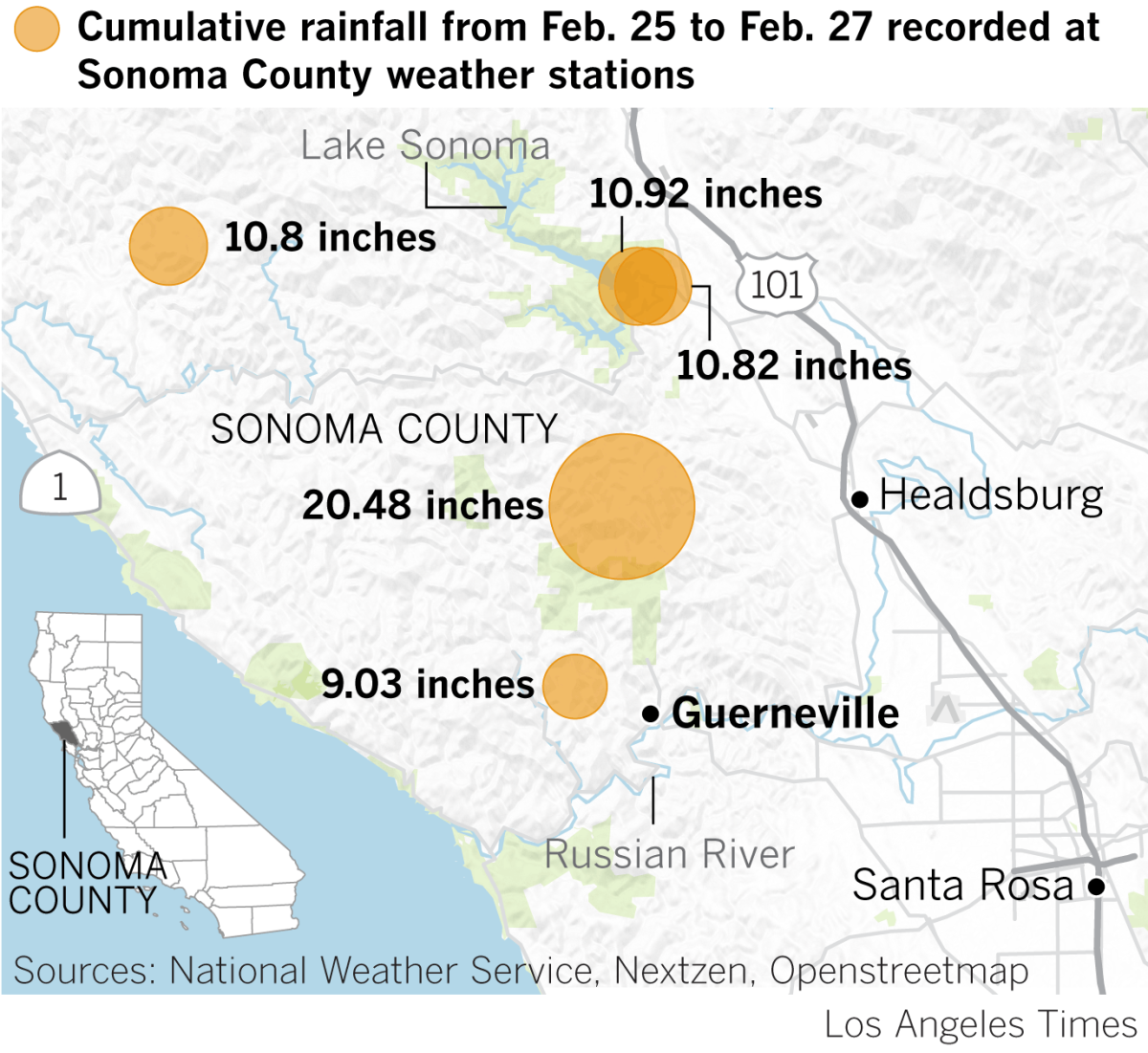
Farther to the north, in Ferndale, authorities say a man drowned in floodwaters while trying to get to his home where three children were trapped.
The Humboldt County Sheriff’s Office said in a statement Thursday that deputies were sent Wednesday night to a house in the town, which sits about 200 miles north of Guerneville.
The man was walking to his home from a barn in up to 5 feet of water when he was carried away by a fast-moving current, authorities said.
His body was found Thursday. The man’s name has not been made public.
Sheriff’s officials said three people tried to reach the man by driving a tractor through the floodwaters, but the machine stalled and they couldn’t get to him in time.
Deputies in a boat rescued the people on the tractor and the children from the home, authorities said.
In Sonoma County, cold, muddy brown water flowed through low-lying businesses and homes without prejudice, carrying vehicles, trees, propane tanks and all manner of large debris. Major roads were underwater, and about the only traffic came from people traversing the area by canoe.
The Russian River Valley is known for its steep coastal slopes and creeks lined by redwoods, which can rapidly funnel deluges from Pacific storms into the shallow river. Major floods hit the area in 1940, 1955, 1964, 1986 and 1995, and longtime residents are well aware they may need to evacuate with any winter storm.
When Caitlyn Meeks, 47, was house hunting five years ago in the small town of Monte Rio, which sits on a Russian River bend, the real estate agent advised her to move above the flood plain, because otherwise, her basement would flood every winter. She chose a hillside home about 60 feet above the river.
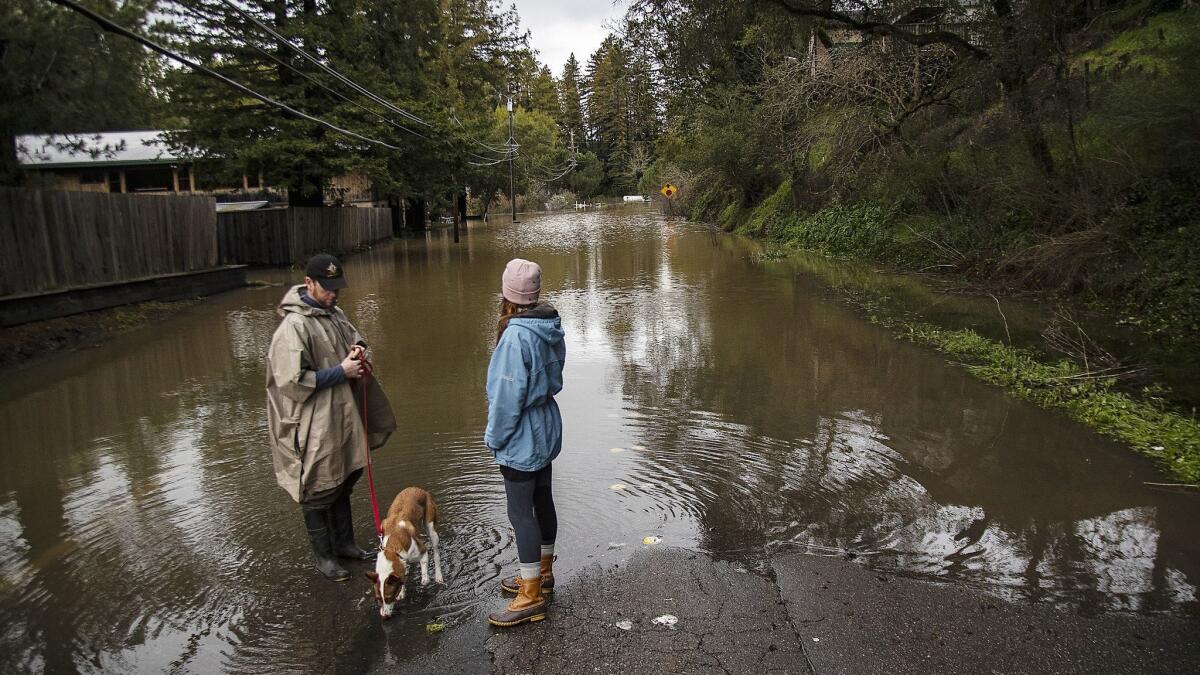
On Wednesday, she and friends sat outside on her back patio with binoculars, watching huge pieces of floating debris slam into an aging bridge spanning the river below.
“I’ve seen water coolers and propane tanks and kayaks,” she said. “I’ve seen soda syrup dispensers going down. A water heater. I can see a tree right now that’s just stuck on the Monte Rio bridge.”
In this region, she said, people are used to floods and take it as a point of pride that they’re “river folk.” On a morning walk down the hill, she saw people shouting at each other from across the swollen river, joking that they’d see each other in a few days.
“All the old-timers here are like, ‘Yep, get a bottle of wine and have some batteries ready and get ready for the show,’ ” she said.
As she spoke, Meeks yelled to her friends about what was floating by.
“A Dumpster! An actual Dumpster!”
Something slammed into the steel bridge, making a loud booming noise.
“Oh, a big tree!” she shouted. “Oh, my goodness. A huge root ball from a tree just went under.”
By Wednesday morning, Guerneville was surrounded on all sides by floodwaters, and as the water rose, the island was broken up into a series of smaller islands.
The Sonoma County Sheriff’s Office was trying to put at least one deputy on each of the bigger islands, and deputies were crossing newly developing streams by boat as needed, said Sgt. Spencer Crum, a department spokesman.
Deputies stationed in the most-beleaguered areas “have brought a change of clothes and could be positioned out there for two to three days without getting back to civilization here,” Crum said.
On River Road, one of the town’s key entryways — which authorities closed off about 10 miles outside town — portable toilets bobbed in the water surrounding an inundated barn.
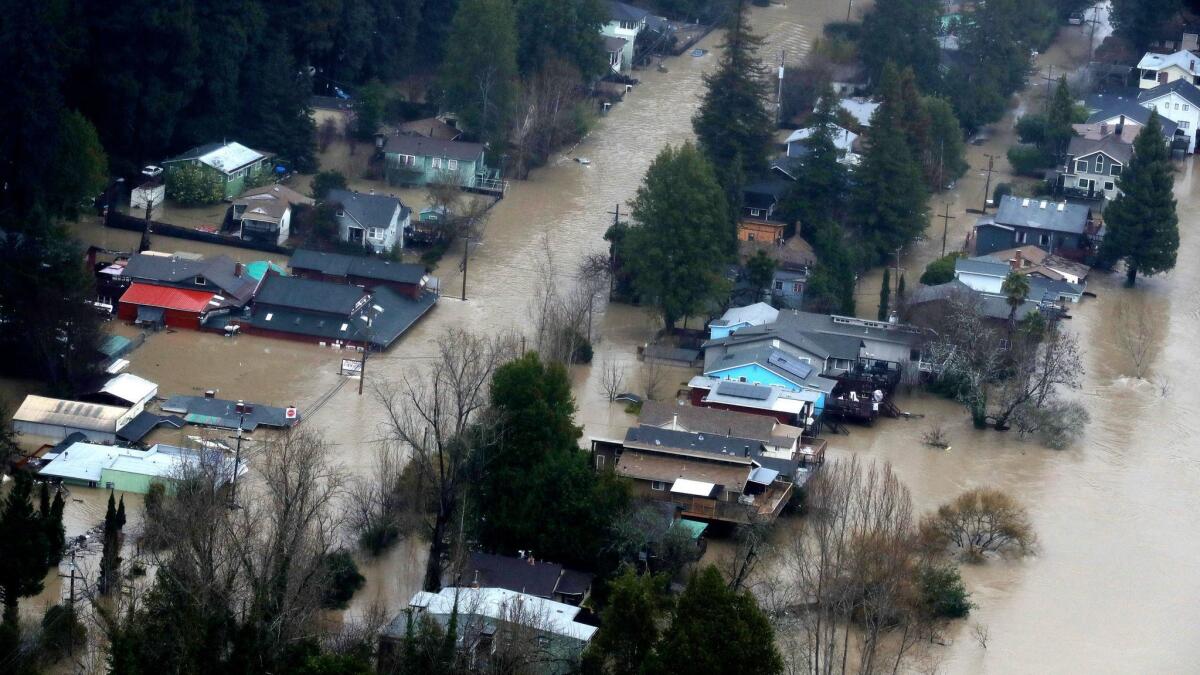
Catherine Bartolomei, who has owned the Farmhouse Inn on River Road with her brother for 18 years, spent Wednesday morning relocating all of her 16 guests. She’d never had to do that before.
“The water just came up faster than we thought it was going to,” Bartolomei said.
She lamented the natural disasters that have befallen the region over the last few years, including the devastating Sonoma County wildfires in the fall of 2017.
“Between the fires and everything else, it’s flipping killing us,” she said.
Bruce Guerra, manager of Guayaki Yerba Mate Cafe in the small wine country town of Sebastopol, said water was entering the parking lot when he got to work about 6 a.m. and kept rising throughout the day.
The restaurant sits next to Highway 12, which was closed by flooding Wednesday afternoon, and was one of the only businesses open, because it is on the second floor. Guerra offered to warehouse a nearby winery’s products so they wouldn’t be ruined.
“It’s people’s livelihoods out here,” he said. “It’s a shame that this is all happening.”
The water level in the Russian River was forecast to peak about 46 feet late Wednesday, according to the National Weather Service. It can all be blamed on another river: a weather system known as an atmospheric river.
The pounding rain had stopped in Sonoma County before the sun rose Wednesday after a low-pressure system shifted the atmospheric river-fueled storm out of the region. The storm, which had lingered in the area for days, created the heaviest rainfall the region had received all winter, said Roger Gass, meteorologist with the National Weather Service in the Bay Area.
“The atmospheric river was a hose of really deep moisture pointed right at Northern California that settled over Sonoma County,” he said. “It’s created a lot of problems.”
The Russian River historically has been prone to flooding, said Barry Dugan, spokesman for the Sonoma County Water Agency. It’s described as a “flashy” river, which means it responds quickly to a lot of rain.
“When there’s a flood in Sonoma County and it’s on the Russian River, it’s usually the worst in Guerneville,” he said. The town, which is bisected by the river, sits only about 13 miles from the Pacific Ocean, and the river reaches its crest there, he said.
Two main reservoirs are situated around the Russian River, Dugan said. One was built in the 1950s and the other in the 1980s. Combined, the two reservoirs impounded 19 billion gallons of water over the last two days, Dugan said. “But with the amount of rain and water in the system we’ve seen in the last few days — there’s just too much water,” he said.
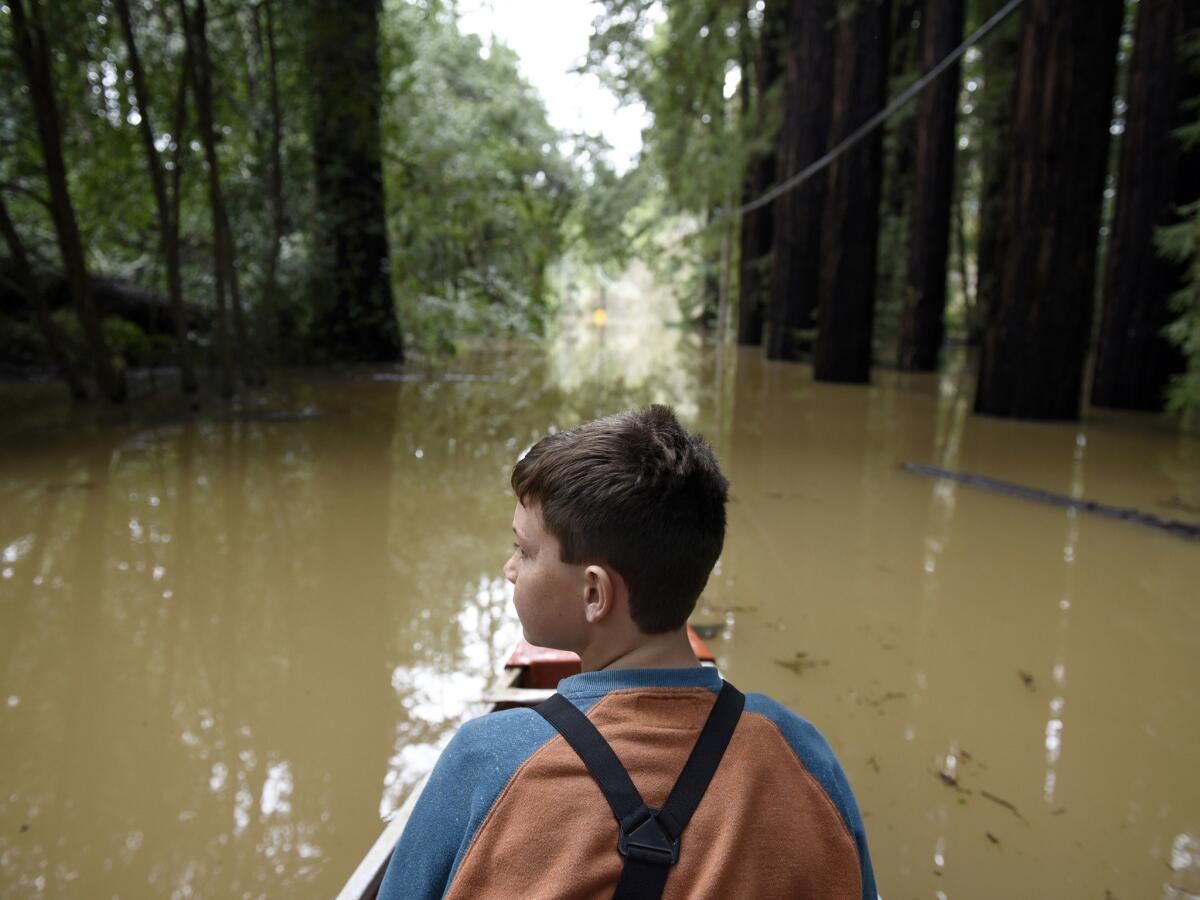
Manny Salazar, a roommate of Caitlyn Meeks, has lived in Monte Rio since 1980. The 1995 floods — to which he lost his car — sent family members packing. But Salazar, a musician, stayed because the area is so beautiful, with its redwood trees and the ocean just a few miles away.
A guitar player and singer, Salazar said he’s romantic about the area’s history. In the 1930s and 1940s, he said, paddle boats used to bring jazz musicians up the Russian River to perform.
In past floods, Salazar has seen people with shotguns perched on the town bridge, ready to shoot floating propane tanks so they didn’t explode and take out the bridge.
“This isn’t anything new to me,” he said. “You just kind of get some provisions and bunker down for a few days. You might see the Red Cross and National Guard here. All we can do is say your prayers for everybody.”
Dillon reported from Forestville, and Branson-Potts, Hussain and Fry reported from Los Angeles. Times staff writer Alene Tchekmedyian and the Associated Press contributed to this report.
More to Read
Sign up for Essential California
The most important California stories and recommendations in your inbox every morning.
You may occasionally receive promotional content from the Los Angeles Times.
